Causes of dehydration in babies. Baby Dehydration: Causes, Symptoms, and Treatment Options for Infants
What are the signs of dehydration in babies. How can parents identify and treat dehydration in infants. What causes babies to become dehydrated. When should you seek medical help for a dehydrated baby.
Understanding Dehydration in Infants
Dehydration occurs when there is insufficient fluid in the body. For babies, whose bodies are composed of approximately 75% water, maintaining proper hydration is crucial. Water plays a vital role in temperature regulation and various bodily functions. While babies naturally lose fluids through urination, bowel movements, sweating, crying, and even breathing, these are typically replenished during feeding. However, excessive fluid loss, often due to illness or other factors, can lead to dehydration.
Why Are Babies Prone to Dehydration?
Infants are particularly susceptible to dehydration for several reasons:
- Their small body size means they have a higher proportion of water content
- They have a faster metabolism, leading to quicker fluid turnover
- Their kidneys are not fully developed, making it harder to conserve water
- They rely entirely on caregivers for fluid intake
Recognizing the Signs of Dehydration in Babies
Early detection of dehydration is crucial for prompt treatment. Parents should be vigilant, especially when their baby is ill. Common signs of dehydration include:
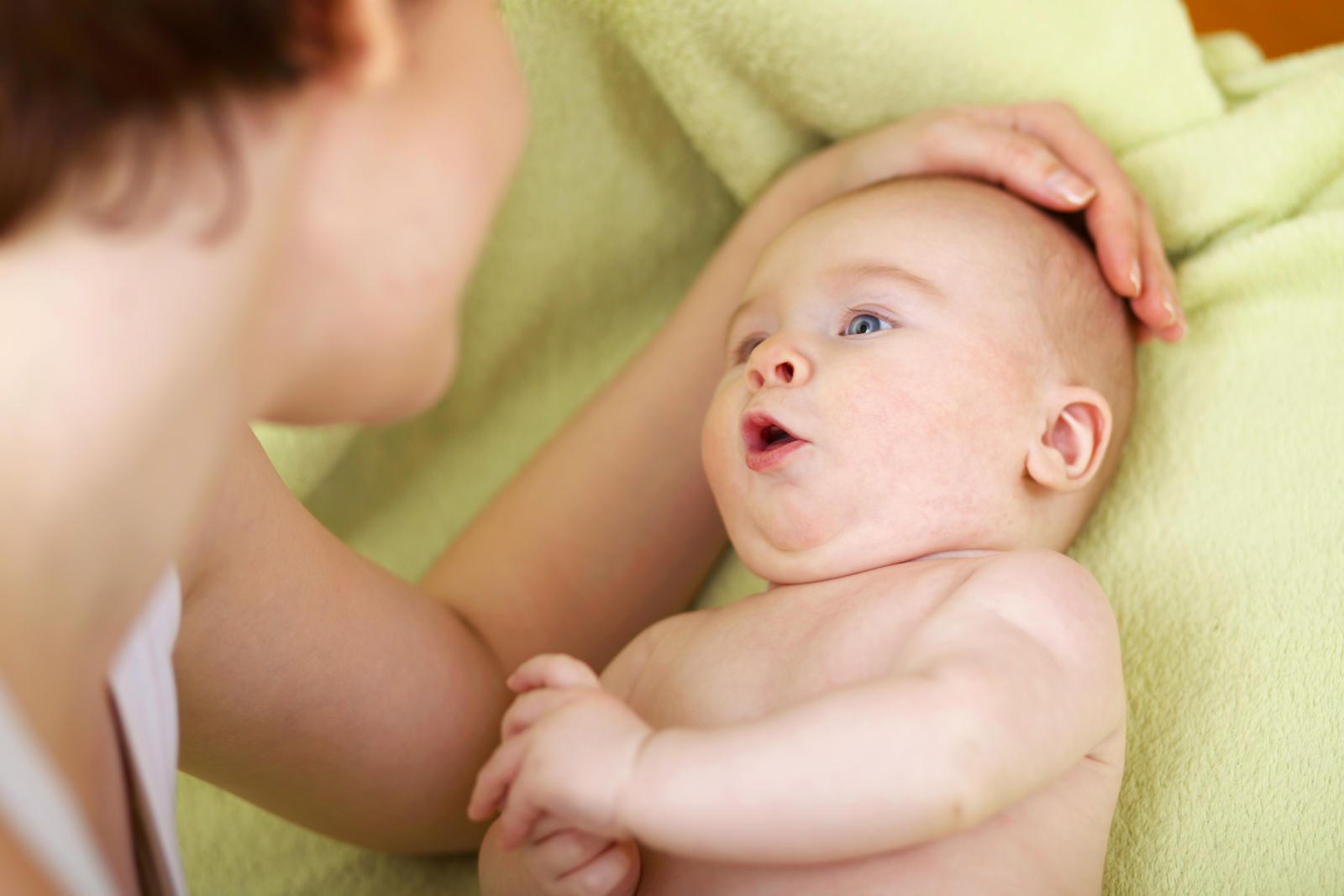
- Dark yellow or orange urine
- Dry lips and mouth
- Excessive sleepiness or irritability
- Fewer than six wet diapers in 24 hours
- Refusal to feed
- Absence of tears when crying
- Sunken fontanelle (soft spot) on the baby’s head
Is a sunken fontanelle always a sign of dehydration? While a sunken fontanelle can indicate dehydration, it’s important to note that the fontanelle’s appearance can vary naturally throughout the day. However, if it appears significantly sunken or stays that way, it’s a cause for concern.
Common Causes of Dehydration in Infants
Understanding the causes of dehydration can help parents take preventive measures. Some common causes include:
Feeding Issues
For breastfed babies, dehydration can result from improper latching, infrequent feeding, short feeding sessions, or issues with breast milk supply. Bottle-fed infants may become dehydrated if they’re not fed often enough or don’t consume sufficient formula or pumped breast milk at each feeding.
Illnesses and Medical Conditions
Certain health issues can lead to rapid fluid loss in babies:
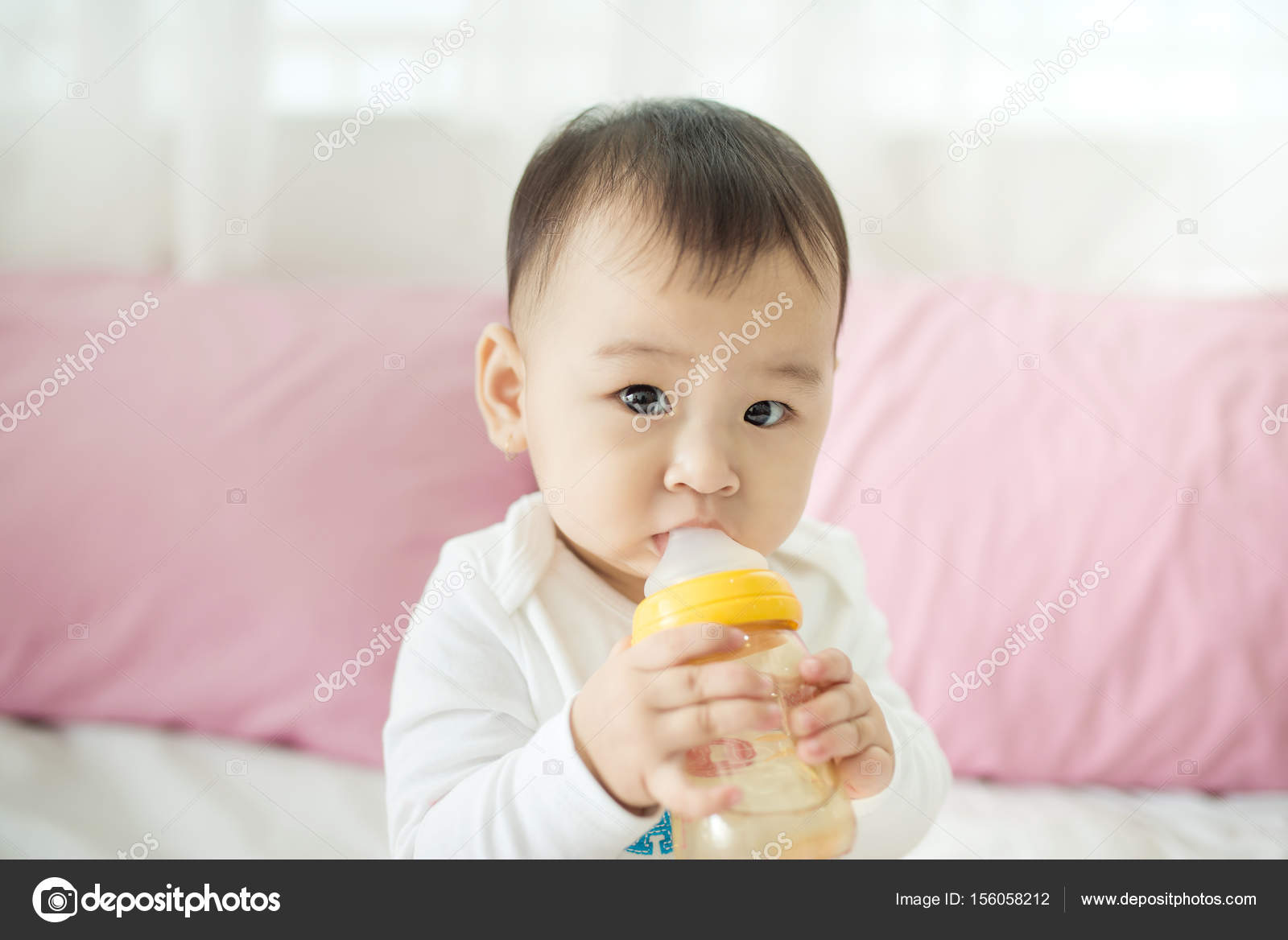
- Diarrhea: Can cause significant fluid loss through the bowels
- Fever: Elevates body temperature, leading to increased fluid loss
- Vomiting: Prevents retention of consumed fluids
Environmental Factors
High temperatures, extreme humidity, or prolonged sun exposure can cause excessive sweating and fluid evaporation through the skin.
Feeding Refusal
Babies may refuse to eat if they’re in pain or feeling unwell. Conditions like a stuffy nose, earache, or sore throat can interfere with sucking and swallowing, leading to reduced fluid intake.
Treating Dehydration in Babies: Home Care and Medical Intervention
The treatment approach for infant dehydration depends on its severity and underlying cause. For mild cases, home care under medical guidance may suffice, while severe cases require immediate medical attention.
Home Care for Mild Dehydration
If your baby shows mild signs of dehydration, your doctor may recommend the following steps:
- Offer frequent breastfeeding or bottle feeding sessions
- Keep track of feedings and wet diapers
- Move the baby to a cool place if overheating is a concern
- Administer oral rehydration fluids like Pedialyte, but only under medical supervision
Can you give water to a dehydrated baby? It’s crucial to consult with a doctor before giving water, juice, or any medication to a dehydrated baby. In some cases, these can worsen dehydration or cause other complications.
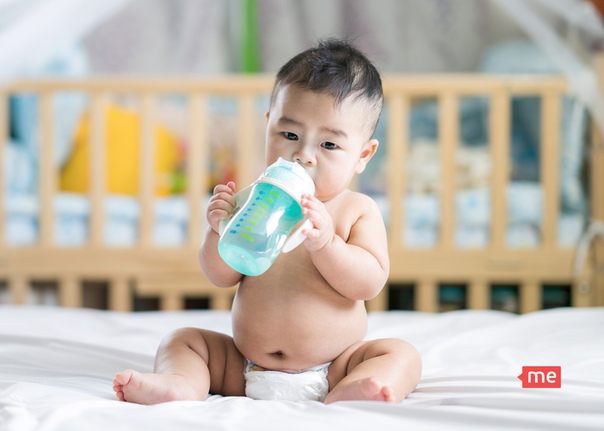
When to Seek Medical Help
Certain situations warrant immediate medical attention:
- Severe or prolonged symptoms of dehydration
- Diarrhea lasting more than eight hours
- Poor feeding for multiple sessions
- Fever in babies under three months old
- Vomiting after two consecutive feedings
Medical Treatment for Dehydration in Infants
In cases of severe dehydration or when home care is insufficient, medical intervention becomes necessary. The treatment approach may include:
Oral Rehydration Therapy
For moderate dehydration, doctors may recommend oral rehydration solutions (ORS) to replenish lost fluids and electrolytes. These specially formulated solutions are designed to be easily absorbed by the body.
Intravenous Fluid Therapy
In severe cases, or when oral rehydration is not possible, intravenous (IV) fluids may be administered. This method allows for rapid rehydration and electrolyte balance restoration.
Addressing Underlying Causes
Doctors will also focus on treating the root cause of dehydration, such as managing diarrhea, reducing fever, or addressing feeding issues.
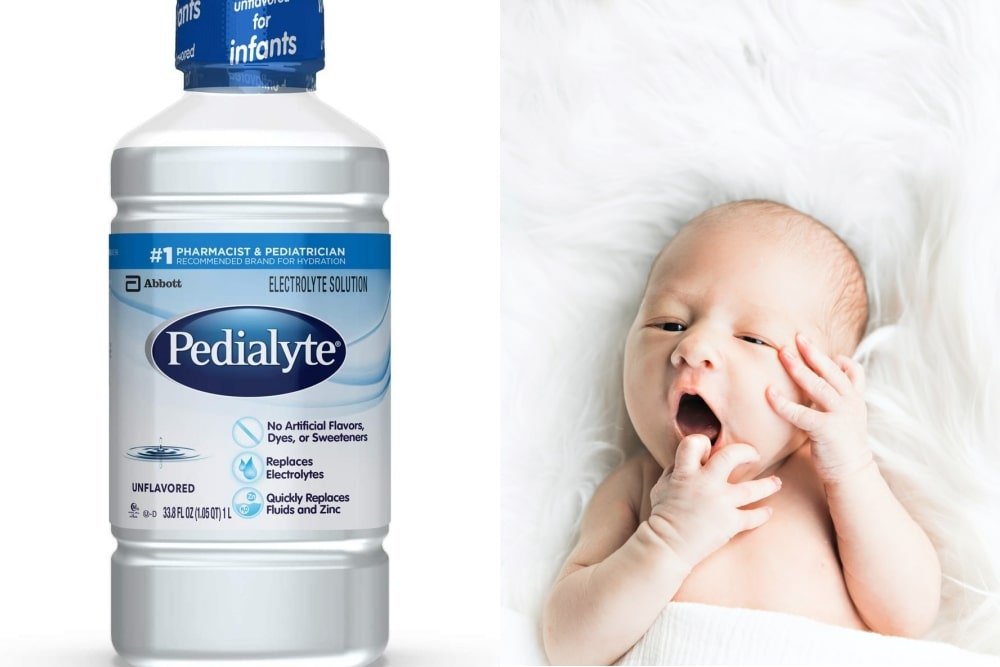
Preventing Dehydration in Babies: Proactive Measures for Parents
Prevention is always better than cure, especially when it comes to infant health. Here are some strategies to help prevent dehydration in babies:
Ensure Adequate Feeding
For breastfed babies, ensure proper latching and frequent feeding. Bottle-fed infants should receive an appropriate amount of formula based on their age and weight. Consult with a pediatrician or lactation consultant if you have concerns about your baby’s feeding habits.
Monitor Fluid Intake During Illness
When your baby is sick, especially with diarrhea or vomiting, increase the frequency of feedings. Offer small amounts of fluid more often to prevent overwhelming the baby’s system.
Manage Environmental Factors
In hot weather, dress your baby in light, breathable clothing. Ensure they stay in a cool, shaded area and offer more frequent feedings to compensate for fluid loss through sweating.
Recognize Early Signs
Familiarize yourself with the early signs of dehydration. Prompt recognition allows for timely intervention, preventing the condition from becoming severe.
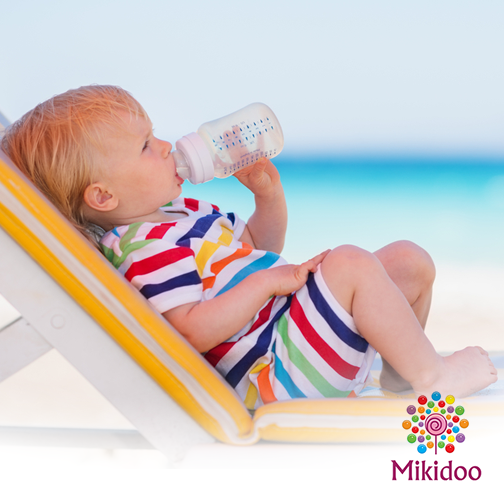
Long-term Effects of Dehydration on Infant Health
While most cases of dehydration can be effectively treated without lasting consequences, severe or prolonged dehydration can have serious implications for a baby’s health and development.
Potential Complications of Severe Dehydration
- Kidney problems: Dehydration can strain the kidneys and potentially lead to kidney damage
- Electrolyte imbalances: Severe fluid loss can disrupt the balance of essential electrolytes in the body
- Seizures: In extreme cases, electrolyte imbalances can trigger seizures
- Developmental delays: Prolonged or recurrent dehydration may impact a baby’s growth and development
How quickly can dehydration affect a baby’s health? Babies can become dehydrated rapidly, sometimes within hours of the onset of symptoms like diarrhea or vomiting. This underscores the importance of vigilant monitoring and prompt action.
The Role of Nutrition in Preventing and Managing Dehydration
Proper nutrition plays a crucial role in maintaining hydration and overall health in infants. Here’s how nutrition intersects with hydration:

Breast Milk and Formula Composition
Both breast milk and infant formula are designed to meet a baby’s hydration needs. Breast milk, in particular, adapts its composition based on the baby’s needs and environmental factors.
Introducing Solid Foods
As babies start solid foods, it’s important to choose options that contribute to hydration. Foods with high water content, such as fruits and vegetables, can supplement fluid intake.
Balancing Electrolytes
Proper nutrition ensures a balance of electrolytes, which is crucial for maintaining hydration and overall health. During illness or in hot weather, electrolyte-rich foods or ORS may be recommended under medical guidance.
Can certain foods help prevent dehydration in babies? While breast milk or formula should remain the primary source of hydration for infants, introducing water-rich fruits and vegetables as part of a balanced diet can contribute to overall hydration as babies grow older.
Technological Advancements in Monitoring Infant Hydration
As technology evolves, new tools are emerging to help parents and healthcare providers monitor babies’ hydration status more effectively:

Smart Diapers
Some companies are developing “smart” diapers that can detect signs of dehydration or urinary tract infections through urine analysis.
Wearable Hydration Monitors
Wearable devices that measure skin hydration levels are being explored for use in infants, potentially providing early warnings of dehydration.
Mobile Apps
Various mobile applications help parents track feeding times, diaper changes, and other metrics that can indicate hydration status.
Are these technological solutions reliable for monitoring infant hydration? While these innovations show promise, they should be used as supplementary tools rather than replacements for attentive care and medical advice. Always consult with healthcare professionals for accurate assessment and treatment of dehydration.
In conclusion, understanding the causes, symptoms, and treatment options for dehydration in babies is crucial for every parent and caregiver. By staying informed and vigilant, you can help ensure your baby stays healthy and well-hydrated. Remember, when in doubt, always consult with a healthcare professional for personalized advice and care.

Baby Dehydration: Definition, Symptoms, Causes, Treatment
What Is Dehydration in Babies?
Dehydration is a common condition where there is not enough fluid in the body. Your baby’s body is made up of approximately 75% water, which is a component of every cell, and is vital for temperature control and maintaining bodily functions. Each day, your child loses water through urination, bowel movements, sweating, crying, and even breathing. These fluids are replaced each time they eat. But, if your baby loses a lot of fluid, for example, due to vomiting or diarrhea, they can become dehydrated.
Signs of Dehydration in Babies
Babies can become dehydrated quickly. Parents should particularly be on the lookout for signs of this condition when their baby is sick. This is especially true when babies have diarrhea, are vomiting, overheated, and/or having difficulty feeding, such as during a nursing strike or when teething. However, note that babies can become dehydrated without any of these conditions present as well.
The most common signs of dehydration in babies include:
- Concentrated urine that looks very dark yellow or orange
- Dry lips
- Dry mouth
- Excessive sleepiness
- Irritability
- Less than six wet diapers in a 24 hour period
- No interest in taking the bottle or breastfeeding
- No tears when your baby is crying
- Sunken fontanelle (soft spot) on your baby’s head
Causes
Dehydration in newborns and young infants is usually the result of not taking in enough fluids to replace what is lost in the course of the day. Older infants and children are more likely to become dehydrated from an illness than are newborns.
- Breast-feeding issues: Breastfed babies can become dehydrated if they’re not latching on correctly, not breastfeeding often enough, not breastfeeding long enough at each feeding, or there’s an issue with the supply of breast milk.

- Bottle-feeding issues: Bottle-fed babies may become dehydrated if they’re not taking a bottle often enough or they’re not taking in enough infant formula or pumped breast milk at each feeding.
- Diarrhea: If your child develops diarrhea, the loss of fluids through the bowels can be dangerous.
- Fever: A rise in your child’s body temperature can cause a greater loss of fluids. Plus, babies may not take feedings as well when they have a fever.
- Overexposure to heat: High temperatures, extreme humidity, or spending too much time outdoors in the hot sun can cause sweating and the evaporation of fluids through your baby’s skin.
- Refusing to eat: Babies may refuse the breast or bottle if they are in pain or not feeling well. A stuffy nose, earache, or sore throat can interfere with sucking and swallowing.
- Vomiting: When babies aren’t able to keep down most of their feedings, they’re losing important fluids that their body needs. Repeated vomiting can quickly lead to dehydration.
Treatment
If your baby is showing any possible signs of dehydration or you have any questions, you should call the doctor. If your baby is struggling, has prolonged or severe signs or symptoms, or you are worried, go to the emergency room. The treatment for infant dehydration depends on the cause and severity of the condition.
When to Call the Doctor
- Has a sunken fontanelle
- Has diarrhea for more than eight hours
- Is not breastfeeding or bottle feeding well
- Is under three months old and has a fever
- Is vomiting after two feedings in a row
- Shows any of the other signs of dehydration listed above
Severe dehydration can be a very dangerous and even life-threatening situation for your baby. Don’t hesitate to contact your doctor and/or go to the emergency room if you are concerned.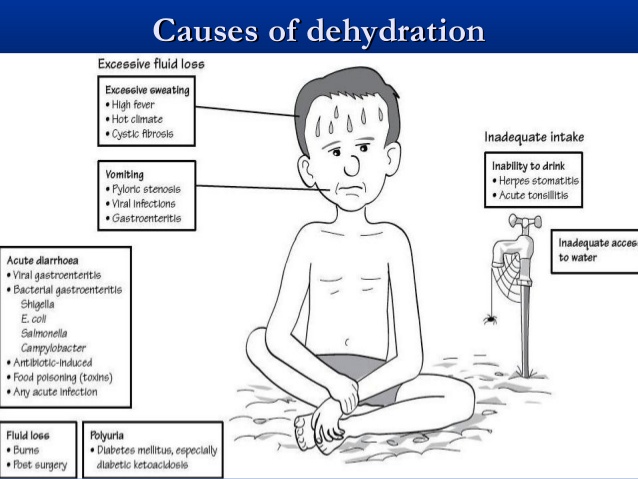
At Home
If the symptoms are mild, your doctor may tell you to begin treating your child at home and continue to carefully monitor the symptoms.
- Follow the doctor’s instructions if they tell you to give your baby an oral rehydration fluid such as Pedialyte. However, you should not give your baby Pedialyte, water, juice, soda, or any medication for illness, vomiting, or diarrhea without talking to your doctor first, as giving them the wrong liquid and/or amounts can worsen dehydration.
- Keep track of your baby’s feedings and wet diapers.
- Move your baby to a cool place and remove excessive clothing or blankets from your child, if the temperature is very warm and your baby is overheating,
- Offer a bottle or breastfeed frequently, especially if your baby isn’t taking in very much at each feeding.
At the Doctor’s Office
If your baby is a newborn or a young infant under three months old, your doctor will likely want to see the baby for a check-up. If diarrhea or other illness or condition been prolonged, the doctor will likely want to see your baby regardless of age.
If you’re breastfeeding, the doctor may want to check your baby’s latch and breastfeeding technique. If you’re breastfeeding and your baby isn’t getting enough breast milk, you may be advised to consult with a lactation consultant and/or to supplement your baby with infant formula.
The doctor may instruct you to give your baby an oral rehydration fluid such as Pedialyte. The doctor will also examine your child’s overall health. If the baby has an infection, the doctor may prescribe medicine to treat the illness.
At the Hospital
If the dehydration becomes severe, your child may need to go to the hospital. At the hospital, the doctor can monitor your baby’s intake and output of fluids. They may also give your baby IV fluids to replace lost fluid, especially if the baby is not eating well or has severe vomiting and diarrhea.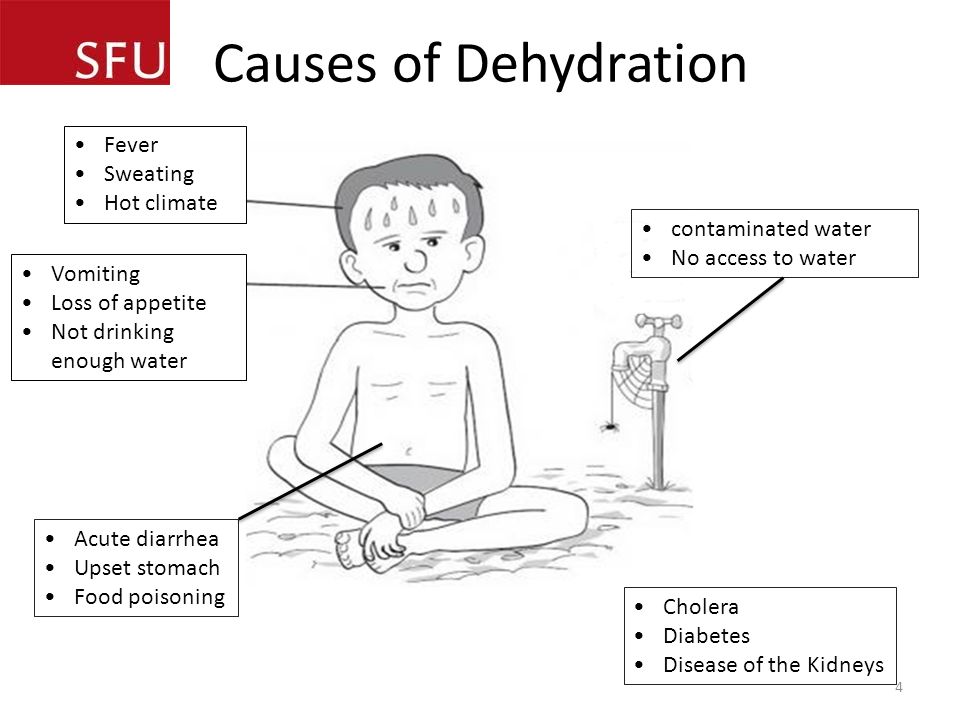 They may also prescribe medicine for your child to treat any illness or underlying cause.
They may also prescribe medicine for your child to treat any illness or underlying cause.
Prevention
The best way to prevent dehydration is to not only know the signs and understand the causes but also know how to keep it from happening.
Feed Your Newborn Frequently
If you’re bottle-feeding, offer one to three ounces of infant formula or pumped breast milk in a bottle every two to three hours. If you’re breastfeeding, put your baby to your breast at least every two to three hours around the clock. Wake sleepy newborns up to breastfeed or to take their bottle if it’s been more than three hours. As the weeks go on and your baby begins to take more at each feeding, they may be able to sleep longer between feedings.
Do not stop feeding your child to try to stop diarrhea or vomiting. Your baby needs extra fluids to replace what they’re losing, so continue to breastfeed or bottle-feed as often as possible while your child is ill and undergoing treatment.
Monitor Wet Diapers and Weight Gain
Keep track of the number of wet diapers your baby is having each day and see your baby’s doctor for regular well-baby checkups to monitor healthy weight gain.
Stay Out of Extreme Heat
Try not to take your newborn or young infant outdoors if it’s very hot or humid. If you need to be outside, keep your baby in the shade and as cool as possible. Babies can also overheat inside in a hot, stuffy room or car or if they’re all bundled up. Try to keep your baby comfortable and breastfeed and offer a bottle often to replace the fluids that they’re losing.
Avoid Giving Water
You don’t have to give your baby a bottle of water between feedings to try to prevent dehydration. Water fills the baby up and doesn’t provide any nutrients. Both breast milk and infant formula provide your baby with fluid plus nutrition.
If it’s a very hot day or you think your baby needs extra water, you can give them an extra bottle of formula or pumped breast milk or breastfeed them more often.
Prevent the Spread of Germs
Wash your hands often, especially before preparing your child’s bottle and after changing diapers or using the bathroom. You can also remind family members and friends to wash their hands and ask them not to visit your child if they are sick, particularly when your child is a newborn and young infant.
A Word From Verywell
Babies lose body fluids during the day, but they get all the fluids they need to replace what’s lost through their regular feedings. It’s a natural balance. When there’s a shift in that balance, a baby can easily become dehydrated. By understanding this common condition, its causes, and it’s warning signs, you can try to prevent it or at least catch it early. Always check with your baby’s doctor if you see signs of dehydration or even just are concerned about their eating patterns, weight gain, or hydration level.
Causes, Symptoms, and Management – DripDropORS
As the winter months approach, we wanted to talk a bit about a health issue that happens more frequently this time of year: infant and baby dehydration. During the cold and flu season, your baby has a greater likelihood of catching a cold, influenza, or a stomach virus. Unfortunately, many cold and flu viruses cause symptoms – like diarrhea and vomiting – that can lead to dehydration.
Dehydration can be life-threatening in both children and adults, though infants are at a higher risk of severe problems. That’s why it’s important for all parents to know how to recognize the signs of baby dehydration and to develop a protocol to tackle dehydration when it occurs.
Here, we’ll show you the warning signs and most likely causes of baby dehydration. Plus, you’ll learn about oral rehydration solutions like DripDrop ORS that are medically formulated to manage mild to moderate dehydration. DripDrop ORS is powerful enough to use in extreme circumstances but safe enough for everyday use.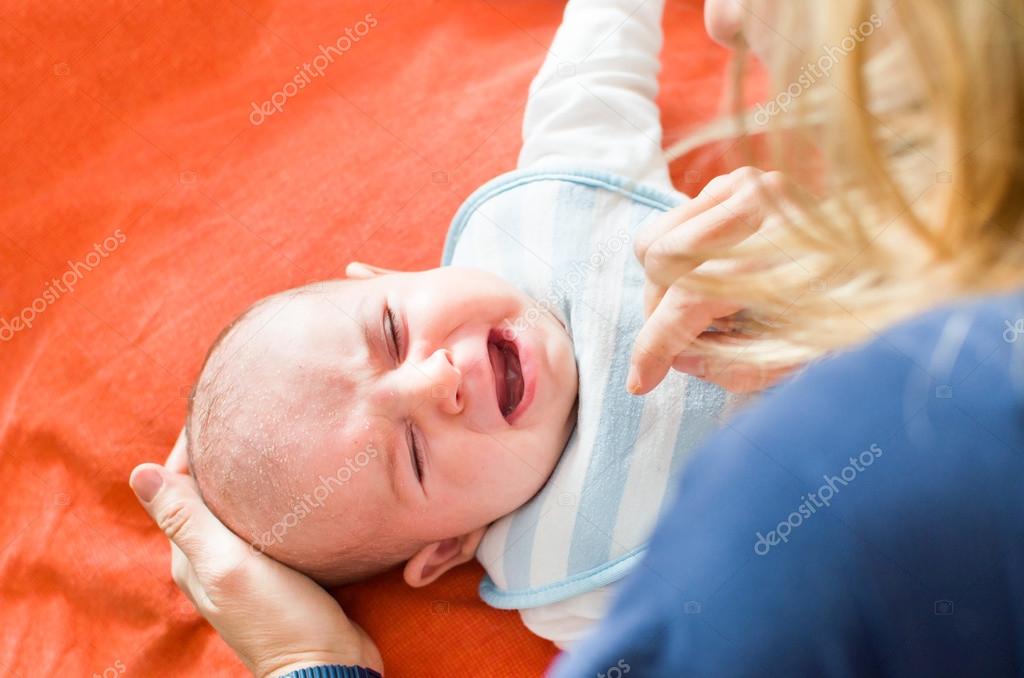 It can be used for babies, but for infants under one year old, consult your pediatrician first.
It can be used for babies, but for infants under one year old, consult your pediatrician first.
Baby dehydration requires fast action. So once you recognize the symptoms, start giving your child small sips of DripDrop ORS immediately. By using DripDrop ORS you can help your baby tackle dehydration and avoid scary and expensive visits to the emergency room.
Common Causes of Infant and Baby Dehydration
Dehydration is caused when the body loses water and nutrients faster than they can be replaced. Newborns have much smaller reserves of water in the body. Therefore, infants and young children — especially when battling illnesses like the cold and flu that rapidly deplete fluids — can become dehydrated more quickly than adults.
Diarrhea is the most common cause of dehydration in young children and babies. That’s because, during an episode of diarrhea, a baby quickly loses water and electrolytes. The risk of dehydration is especially high when diarrhea persists for more than a couple of days.
When diarrhea is coupled with other symptoms that deplete body water, dehydration can set in faster. For instance, when combined with vomiting — another common symptom of colds and flu — the risk for dehydration is even more serious. Other symptoms that can lead to increased body fluid loss include fevers, overheating, and excessive sweating. Even sore throats, which discourage babies from drinking voluntarily, can increase the risk of dehydration.
Compounding the problem, the winter months also present an increased risk of dehydration due to temperature changes. While many of us associate dehydration with hot weather, cold weather also poses a risk. That’s because winter clothing is bulky and heavy, requiring more exertion and sweating as your child moves. Plus, our thirst response becomes 40% less effective in wintertime. That means your baby may not drink enough fluids, leading to the onset of dehydration.
In addition, your baby may be at higher risk of dehydration if you have certain medical conditions that prevent you from producing breast milk and your baby gets most of their nutrients from breast milk. For example, if you’re sick and dehydrated or have a kidney disorder that affects your hydration levels, you may not be able to produce enough breast milk. Your breast milk can also contain low amounts of nutrients, including potassium and chloride, which may help your child stay hydrated. However, for best results, also use DripDrop ORS with water.
For example, if you’re sick and dehydrated or have a kidney disorder that affects your hydration levels, you may not be able to produce enough breast milk. Your breast milk can also contain low amounts of nutrients, including potassium and chloride, which may help your child stay hydrated. However, for best results, also use DripDrop ORS with water.
How To Recognize Baby Dehydration Symptoms
How can you tell if your baby is dehydrated? Mild to moderate dehydration, which can often be treated at home, causes a wide range of symptoms. The first step in managing baby dehydration is to identify the signs of dehydration in kids and infants.
Here are the most common symptoms of baby dehydration:
- Fewer wet diapers than normal or no wet diapers in three hours or more
- Darker, more concentrated urine
- Lethargy, sleepiness, and less activity
- Abnormal breathing
- Fussiness
- Parched mouth and/or lips (dry or cracked lips, difficulty swallowing or speaking)
- No tears when crying
If your baby suffers from a prolonged illness — such as gastroenteritis — with several symptoms that cause dehydration, severe dehydration may occur. Severe dehydration requires immediate medical attention.
Symptoms of severe baby dehydration include:
- Sunken eyes
- Sunken soft spot (called fontanelles or fontanels which are located on your baby’s head)
- Lethargy, inactivity, and not responding to touch or your voice
- Rapid heartbeat
- No tears when crying
- No urine output (12 or more hours since their last wet diaper)
- Dry mouth, no saliva, and chapped lips
- Especially pale skin that doesn’t snap back into place when pinched
Once you recognize these symptoms of dehydration in your baby, it’s important to take swift action. If your baby breastfeeds, you should continue to breastfeed while also supplementing the baby’s hydration with other hydration tools and extra fluids.
For mild to moderate dehydration, an oral rehydration drink can help replenish vital nutrients and water. In fact, oral rehydration drinks like DripDrop ORS are recommended as a first-line of treatment for child and baby dehydration by a variety of groups, including the American Academy of Pediatrics, Centers for Disease Control, and the World Health Organization.
DripDrop ORS is packed with essential electrolytes, according to international health community standards, and it is doctor-formulated to replenish electrolyte and fluid loss due to diarrhea and vomiting. The precise ratio of electrolytes in DripDrop ORS also allows the body to absorb water faster, leading to swifter rehydration. Compared to pediatric alternatives, DripDrop ORS delivers 25% more electrolytes to help rehydrate faster.
While focusing on providing your baby with plenty of fluids and electrolytes, it’s also a good idea to schedule a follow-up with your doctor to ensure your child is well. A physician can provide vital health information, check to see that your baby is recovering well, and can offer tips for increasing fluid intake to prevent future dehydration episodes.
Oral Rehydration for Remedying Mild to Moderate Dehydration
When your baby is in a state of dehydration, water alone is not enough. That’s because your baby’s body needs the perfect balance of sodium and glucose — which aren’t found in plain drinking water — to help absorption.
With the precisely balanced ratio of electrolytes in DripDrop ORS, you can help your baby replenish lost fluids and vital electrolytes to relieve dehydration quickly. Plus, DripDrop ORS supplies vitamins like zinc, potassium, and magnesium, which are essential to support your child’s immune and overall health.
Medical-grade DripDrop ORS allows you to manage mild to moderate baby dehydration outside of a hospital setting. Our patented formula is powerful enough to help babies suffering from dehydration caused by Ebola and cholera but safe enough for everyday use.:max_bytes(150000):strip_icc()/what-is-a-normal-respiratory-rate-2248932-v1-5c1abe6846e0fb0001c6284a.png) Plus, DripDrop ORS tastes amazing and comes in a variety of hot and cold flavors.
Plus, DripDrop ORS tastes amazing and comes in a variety of hot and cold flavors.
Tackle Baby Dehydration With DripDrop ORS
Not only is DripDrop ORS medically relevant for dehydration — it tastes so great
that children and infants will love it. DripDrop ORS was developed by a doctor on a mission to defeat life-threatening dehydration. When he saw that young children and babies were spitting out life-saving electrolyte solutions for dehydration, he knew he had to act.
That’s why he created our patented formula that provides medically relevant electrolyte levels, improving on the World Health Organization’s Oral Rehydration Solution (ORS) standards because of its delicious taste. It gives children a medically viable ORS that also tastes great, so you can manage mild to moderate dehydration at home where your baby’s most comfortable.
For cases of mild to moderate dehydration, DripDrop ORS is a fast, effective, and great tasting remedy. The convenient packaging allows you to have DripDrop ORS when you need it, where you need it.
Get started with a trial or our most popular multi-flavor pouch for dehydration relief fast. Or, if you’re ready to make a purchase, and you’re a first-time buyer, enjoy 15% off your order with this code: FIRST15.
Signs of Dehydration in Infants & Children
Page Content
Be alert for the following warning signs of dehydration, and notify the pediatrician immediately if any of them develop./GettyImages-157681979-5797aaca5f9b58461f282205.jpg)
Mild to Moderate Dehydration:
Plays less than usual
Urinates less frequently (for infants, fewer than six wet diapers per day)
Parched, dry mouth
Fewer tears when crying
Sunken soft spot of the head in an infant or toddler
Stools will be loose if dehydration is caused by
diarrhea; if dehydration is due to other fluid loss (vomiting, lack of fluid intake), there will be decreased bowel movements.
Severe Dehydration
(in addition to the symptoms and signals already listed):
Very fussy
Excessively sleepy
Sunken eyes
Cool, discolored hands and feet
Wrinkled skin
Urinates only one to two times per day
Additional Information:
Article Body
- Last Updated
- 9/24/2019
- Source
- Caring for Your Baby and Young Child: Birth to Age 5, 6th Edition (Copyright © 2015 American Academy of Pediatrics)
The information contained on this Web site should not be used as a substitute for the medical care and advice of your pediatrician. There may be variations in treatment that your pediatrician may recommend based on individual facts and circumstances.
Dehydration – Symptoms and causes
Overview
Dehydration occurs when you use or lose more fluid than you take in, and your body doesn’t have enough water and other fluids to carry out its normal functions.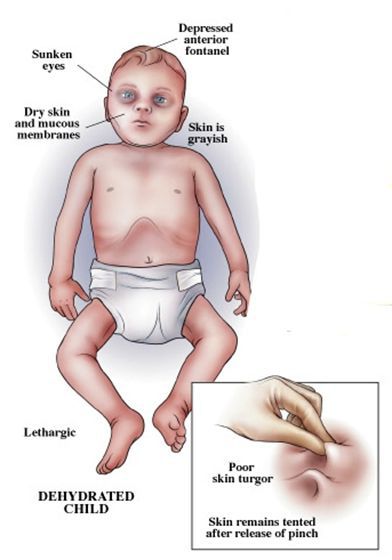 If you don’t replace lost fluids, you will get dehydrated.
If you don’t replace lost fluids, you will get dehydrated.
Anyone may become dehydrated, but the condition is especially dangerous for young children and older adults.
The most common cause of dehydration in young children is severe diarrhea and vomiting. Older adults naturally have a lower volume of water in their bodies, and may have conditions or take medications that increase the risk of dehydration.
This means that even minor illnesses, such as infections affecting the lungs or bladder, can result in dehydration in older adults.
Dehydration also can occur in any age group if you don’t drink enough water during hot weather — especially if you are exercising vigorously.
You can usually reverse mild to moderate dehydration by drinking more fluids, but severe dehydration needs immediate medical treatment.
Symptoms
Thirst isn’t always a reliable early indicator of the body’s need for water. Many people, particularly older adults, don’t feel thirsty until they’re already dehydrated. That’s why it’s important to increase water intake during hot weather or when you’re ill.
The signs and symptoms of dehydration also may differ by age.
Infant or young child
- Dry mouth and tongue
- No tears when crying
- No wet diapers for three hours
- Sunken eyes, cheeks
- Sunken soft spot on top of skull
- Listlessness or irritability
Adult
- Extreme thirst
- Less frequent urination
- Dark-colored urine
- Fatigue
- Dizziness
- Confusion
When to see a doctor
Call your family doctor if you or a loved one:
- Has had diarrhea for 24 hours or more
- Is irritable or disoriented and much sleepier or less active than usual
- Can’t keep down fluids
- Has bloody or black stool
Causes
Sometimes dehydration occurs for simple reasons: You don’t drink enough because you’re sick or busy, or because you lack access to safe drinking water when you’re traveling, hiking or camping.
Other dehydration causes include:
- Diarrhea, vomiting. Severe, acute diarrhea — that is, diarrhea that comes on suddenly and violently — can cause a tremendous loss of water and electrolytes in a short amount of time. If you have vomiting along with diarrhea, you lose even more fluids and minerals.
- Fever. In general, the higher your fever, the more dehydrated you may become. The problem worsens if you have a fever in addition to diarrhea and vomiting.
- Excessive sweating. You lose water when you sweat. If you do vigorous activity and don’t replace fluids as you go along, you can become dehydrated. Hot, humid weather increases the amount you sweat and the amount of fluid you lose.
- Increased urination. This may be due to undiagnosed or uncontrolled diabetes. Certain medications, such as diuretics and some blood pressure medications, also can lead to dehydration, generally because they cause you to urinate more.
Risk factors
Anyone can become dehydrated, but certain people are at greater risk:
- Infants and children. The most likely group to experience severe diarrhea and vomiting, infants and children are especially vulnerable to dehydration. Having a higher surface area to volume area, they also lose a higher proportion of their fluids from a high fever or burns. Young children often can’t tell you that they’re thirsty, nor can they get a drink for themselves.
- Older adults. As you age, your body’s fluid reserve becomes smaller, your ability to conserve water is reduced and your thirst sense becomes less acute. These problems are compounded by chronic illnesses such as diabetes and dementia, and by the use of certain medications. Older adults also may have mobility problems that limit their ability to obtain water for themselves.
- People with chronic illnesses.
 Having uncontrolled or untreated diabetes puts you at high risk of dehydration. Kidney disease also increases your risk, as do medications that increase urination. Even having a cold or sore throat makes you more susceptible to dehydration because you’re less likely to feel like eating or drinking when you’re sick.
Having uncontrolled or untreated diabetes puts you at high risk of dehydration. Kidney disease also increases your risk, as do medications that increase urination. Even having a cold or sore throat makes you more susceptible to dehydration because you’re less likely to feel like eating or drinking when you’re sick. - People who work or exercise outside. When it’s hot and humid, your risk of dehydration and heat illness increases. That’s because when the air is humid, sweat can’t evaporate and cool you as quickly as it normally does, and this can lead to an increased body temperature and the need for more fluids.
Complications
Dehydration can lead to serious complications, including:
- Heat injury. If you don’t drink enough fluids when you’re exercising vigorously and perspiring heavily, you may end up with a heat injury, ranging in severity from mild heat cramps to heat exhaustion or potentially life-threatening heatstroke.
- Urinary and kidney problems. Prolonged or repeated bouts of dehydration can cause urinary tract infections, kidney stones and even kidney failure.
- Seizures. Electrolytes — such as potassium and sodium — help carry electrical signals from cell to cell. If your electrolytes are out of balance, the normal electrical messages can become mixed up, which can lead to involuntary muscle contractions and sometimes to a loss of consciousness.
- Low blood volume shock (hypovolemic shock). This is one of the most serious, and sometimes life-threatening, complications of dehydration. It occurs when low blood volume causes a drop in blood pressure and a drop in the amount of oxygen in your body.
Prevention
To prevent dehydration, drink plenty of fluids and eat foods high in water such as fruits and vegetables. Letting thirst be your guide is an adequate daily guideline for most healthy people.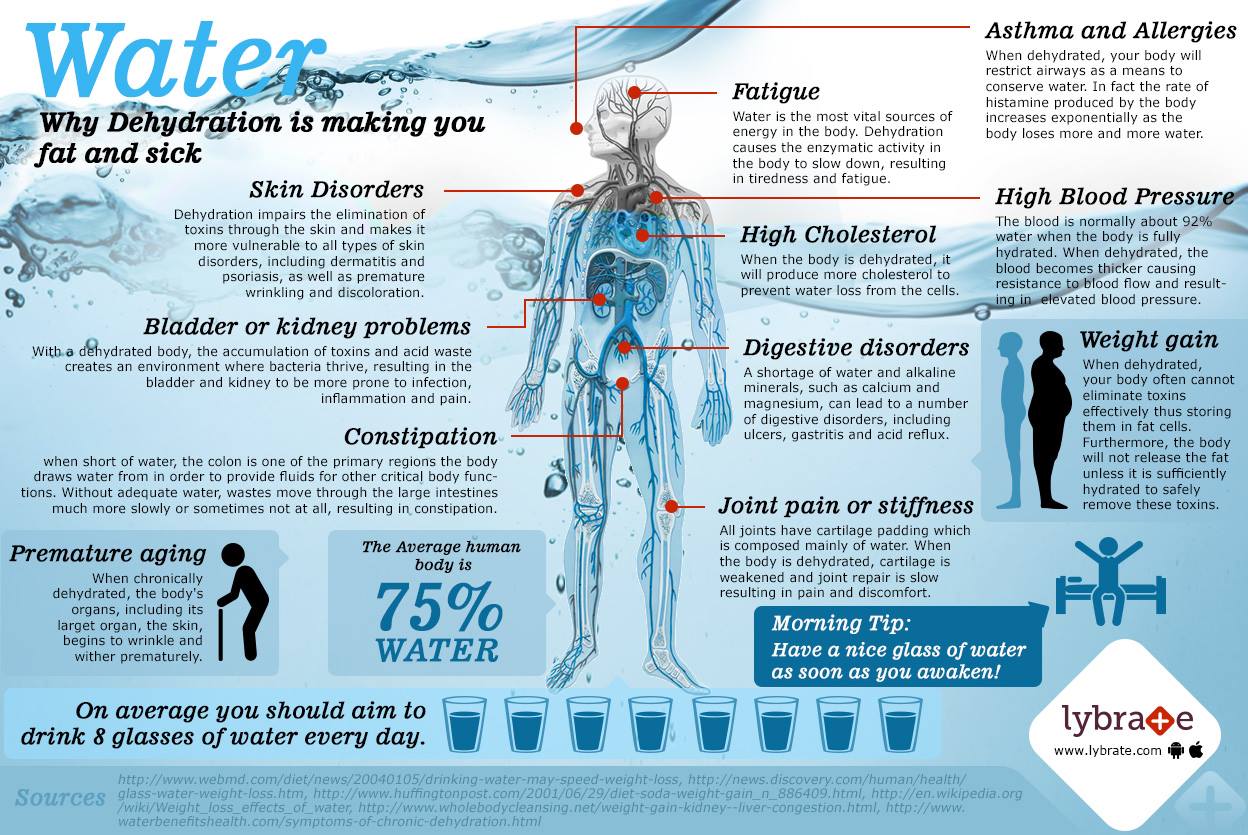
People may need to take in more fluids if they are experiencing conditions such as:
- Vomiting or diarrhea. If your child is vomiting or has diarrhea, start giving extra water or an oral rehydration solution at the first signs of illness. Don’t wait until dehydration occurs.
- Strenuous exercise. In general, it’s best to start hydrating the day before strenuous exercise. Producing lots of clear, dilute urine is a good indication that you’re well-hydrated. During the activity, replenish fluids at regular intervals and continue drinking water or other fluids after you’re finished.
- Hot or cold weather. You need to drink additional water in hot or humid weather to help lower your body temperature and to replace what you lose through sweating. You may also need extra water in cold weather to combat moisture loss from dry air, particularly at higher altitudes
- Illness. Older adults most commonly become dehydrated during minor illnesses — such as influenza, bronchitis or bladder infections. Make sure to drink extra fluids when you’re not feeling well.
Sept. 19, 2019
Dehydration – NHS
Dehydration means your body loses more fluids than you take in. If it’s not treated, it can get worse and become a serious problem.
Important
Babies, children and the elderly are more at risk of dehydration.
Check if you’re dehydrated
Symptoms of dehydration in adults and children include:
- feeling thirsty
- dark yellow and strong-smelling pee
- feeling dizzy or lightheaded
- feeling tired
- a dry mouth, lips and eyes
- peeing little, and fewer than 4 times a day
Dehydration can happen more easily if you have:
- diabetes
- vomiting or diarrhoea
- been in the sun too long (heatstroke)
- drunk too much alcohol
- sweated too much after exercising
- a high temperature of 38C or more
- been taking medicines that make you pee more (diuretics)
How you can reduce the risk of dehydration
Drink fluids when you feel any dehydration symptoms.
If you find it hard to drink because you feel sick or have been sick, start with small sips and then gradually drink more.
You can use a spoon to make it easier for your child to swallow the fluids.
You should drink enough during the day so your pee is a pale clear colour.
Drink when there’s a higher risk of dehydrating. For example, if you’re vomiting, sweating or you have diarrhoea.
Video: how to prevent dehydration
This video shows you how you can reduce the risk of dehydration.
Media last reviewed: 1 July 2020
Media review due: 1 July 2023
Carers: making sure someone drinks enough
Sometimes people you care for do not have a sense of how much they’re drinking.
To help them:
- make sure they drink during mealtimes
- make drinking a social thing, like “having a cup of tea”
- offer them food with a high water content – for example, soups, ice cream or jellies, or fruits like melon
A pharmacist can help with dehydration
If you’re being sick or have diarrhoea and are losing too much fluid, you need to put back the sugar, salts and minerals that your body has lost.
Your pharmacist can recommend oral rehydration sachets. These are powders that you mix with water and then drink.
Ask your pharmacist which ones are right for you or your child.
Non-urgent advice: See a GP if:
- your symptoms do not improve with treatment
Immediate action required: Call 999 or go to A&E if:
- you’re feeling unusually tired
- you’re confused and disorientated
- any dizziness when you stand up does not go away
- you have not peed all day
- your pulse is weak or rapid
- you have fits (seizures)
These can be signs of serious dehydration that need urgent treatment.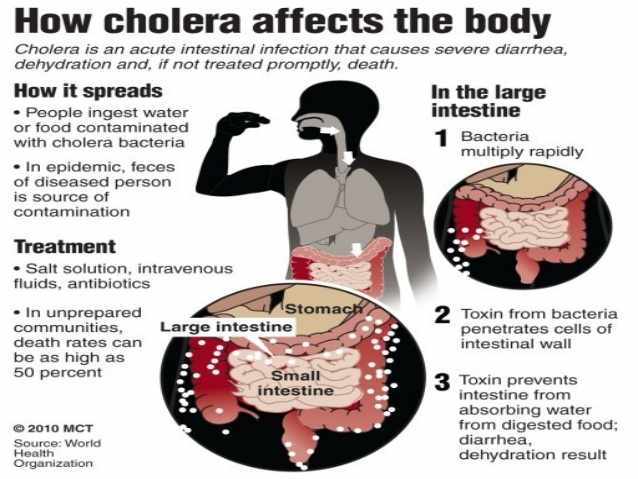
Under-5s with dehydration
The under-5s should get plenty of fluids to avoid dehydration.
It’s quite common for young children to become dehydrated. It can be serious if it’s not dealt with quickly.
Urgent advice: Take your baby or child to the GP urgently or go to A&E if they:
- seem drowsy
- breathe fast
- have few or no tears when they cry
- have a soft spot on their head that sinks inwards (sunken fontanelle)
- have a dry mouth
- have dark yellow pee or have not had a pee in last 12 hours
- have cold and blotchy-looking hands and feet
Once the dehydration has been treated, your child will need to maintain their fluid levels.
GPs usually advise:
Do
carry on breastfeeding or using formula – try to give small amounts more often than usual
for babies on formula or solid foods – give them small sips of extra water
give small children their usual diet
give regular small sips of rehydration solution to replace lost fluids, salts and sugars – ask your pharmacist to recommend one
Don’t
do not make formula weaker
do not give young children fruit juice or fizzy drinks – it makes things like diarrhoea or vomiting worse
Page last reviewed: 09 August 2019
Next review due: 09 August 2022
Signs of dehydration in toddlers: Symptoms, causes, and treatment
We include products we think are useful for our readers. If you buy through links on this page, we may earn a small commission. Here’s our process.
Here’s our process.
Dehydration occurs when the body uses or loses more fluid than it takes in. Dehydration can affect anyone, including toddlers.
On most days, people will replace fluids easily by drinking and eating as usual. However, diarrhea, vomiting, illness, and hot weather can all increase fluid loss and make dehydration more likely.
Caregivers should be aware of the warning signs of dehydration in toddlers because it can lead to serious health complications. In severe cases, it can even be fatal.
Read on to learn more about the signs, symptoms, and causes of dehydration. We also cover treatment and when to see a doctor. With proper care, treating dehydration is straightforward and leads to full recovery.
If a toddler has a stomach virus, is vomiting, has diarrhea, or refuses to drink or eat, caregivers should monitor them for signs of dehydration.
Caregivers should bear in mind that the toddler may not understand the initial symptoms of thirst or dehydration or be able to communicate them to others. It is vital not to wait until the toddler is excessively thirsty before taking action.
Signs of dehydration in toddlers may include:
- urinating less frequently
- dry diapers, or no urination, for 3 hours or longer
- no tears when crying
- cracked lips
- a dry mouth
- sunken eyes
- lethargy
- decreased activity
- sleepiness
- crying or being fussy
- dry or sticky mucus on the tongue or the lining of the mouth
- fast breathing
- a rapid heart rate
Dehydration in toddlers occurs when there is more fluid leaving the body than coming in.
Some cases may result from toddlers not drinking enough water. However, it is sometimes possible that an infection, illness, or disease will lead to dehydration.
Risk factors for dehydration in toddlers include:
- not drinking enough water
- vomiting
- diarrhea
- viral infections, such as rotavirus, Norwalk virus, and adenovirus
- bacterial infections, including Salmonella, Escherichia coli, Campylobacter, and Clostridium difficile
- parasitic infections, such as Giardia lamblia, also known as giardiasis
- excessive sweating due to fever or hot weather
- a fever
- chronic illnesses, including diabetes, bowel disorders, celiac disease, and cystic fibrosis
- a reaction to medication
- hot and humid weather
Share on PinterestA doctor may need to carry out tests to diagnose the cause of dehydration.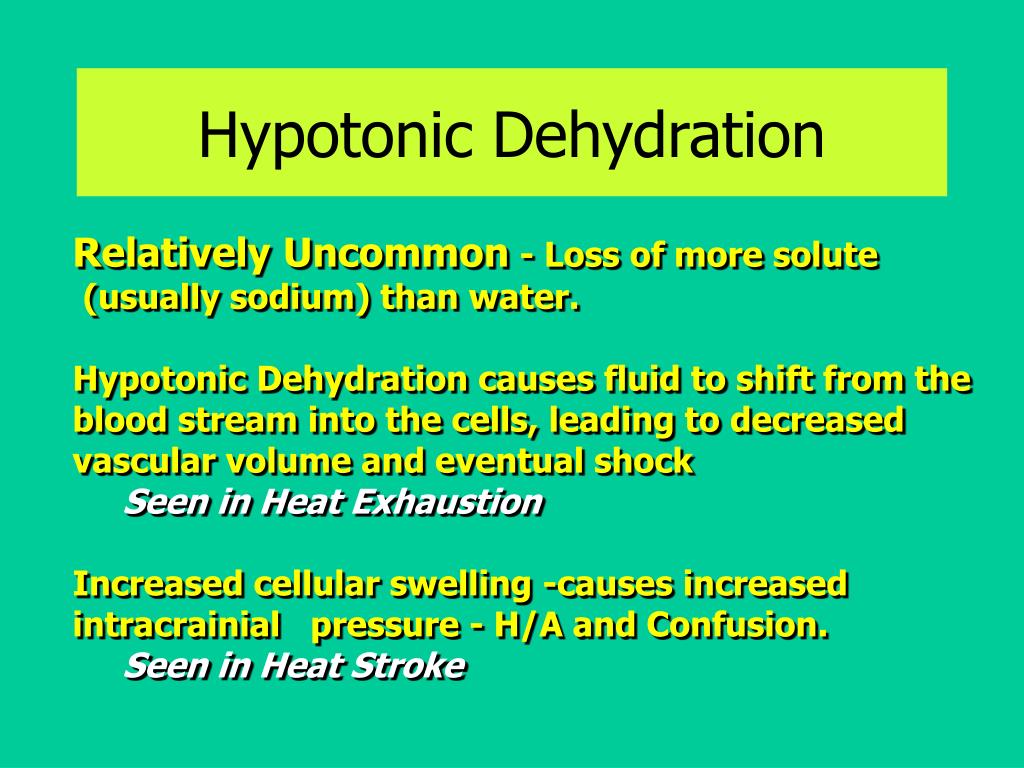
To understand the cause and severity of a toddler’s dehydration, the doctor will consider their medical history, discuss their signs and symptoms with a caregiver, and carry out a physical examination.
The doctor may also order specific laboratory tests to help them determine the optimal treatment. The tests for causes of dehydration may include:
- a complete blood count to look for infections
- blood cultures to check for infections
- blood chemistry tests to identify electrolyte imbalances, in cases of diarrhea and vomiting
- urine tests to look for bladder infections, determine the severity of the dehydration, and check for uncontrolled diabetes
- chest X-ray
- testing for rotavirus infection
- stool analysis
- a lumbar puncture to test the spinal fluid
Caregivers can usually treat dehydration in toddlers at home. The first step in treatment is to replace lost fluids with oral rehydration liquids that are designed to replace electrolytes and sugar.
People can find over-the-counter (OTC) oral rehydration products in grocery stores, drug stores, or online.
Clear soups, popsicles, and ice chips can help with rehydration, especially if a toddler refuses to drink water. If the toddler is still breast-feeding, they should continue to do so alongside the rehydration solution and their solid diet.
If a toddler needs medical treatment, their doctor may provide rehydration in the form of an IV solution.
Toddlers who have been ill can begin eating again when they have not vomited for 4 hours. For decades, people have used the BRAT diet, which consists of bananas, rice, applesauce, and toast, to ease diarrhea and vomiting in children.
Although this diet is safe and gets positive anecdotal feedback, there has not been any comprehensive research to confirm how well it works.
However, a 2016 single-blind randomized controlled trial found that rice soup was effective alongside a prescription oral rehydration solution for children aged 8–24 months with acute diarrhea.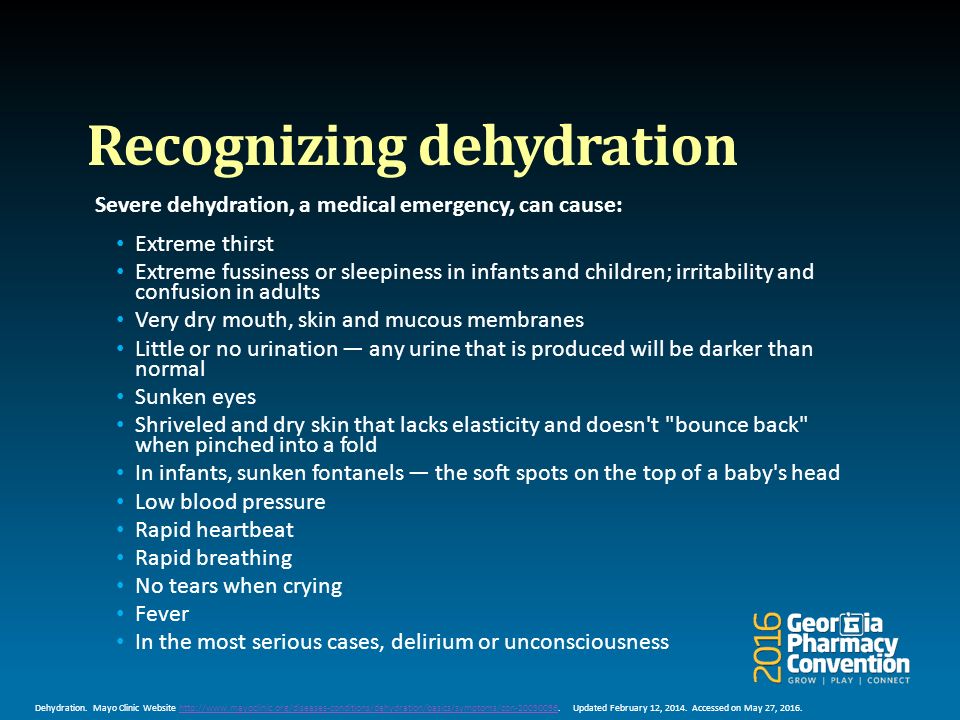
Caregivers should take a toddler with any of the following symptoms to see a doctor:
- no urinating for over 3 hours
- more urination than normal
- diarrhea that lasts for more than 24 hours
- dry mouth
- crying without tears
- bloody stool
- sunken eyes
- fever of 102°F or above
- abdominal or rectal pain
- decreased activity levels
Dehydration can become severe.
If it is not possible to reach a doctor, it is vital to contact the emergency services or go to the local emergency room if the toddler:
- has a dry mouth
- has severe stomach pain
- is lethargic or difficult to wake up
By being aware of the risk factors for dehydration and replacing fluids promptly, caregivers can often prevent dehydration in toddlers. The following techniques can also help:
- If a toddler is vomiting, has diarrhea, or shows early signs of dehydration, give them an oral rehydration solution as soon as possible.
- When it is hot and sunny outside, allow toddlers to acclimatize to the heat slowly.
- Ensure that toddlers are drinking enough water throughout the day, especially if they are unwell or it is a hot day.
- Give toddlers plain water instead of sugary soft beverages because sugary or salty foods and beverages can lead to dehydration.
In most cases, toddlers become dehydrated because of a simple viral infection. Dehydration during illness can cause unpleasant side effects and serious complications, and it can be fatal without treatment. Therefore, it is crucial to prevent and treat dehydration.
Giving the toddler enough fluids using oral rehydration fluids, or an IV when necessary, should ensure that they make a complete recovery.
Dehydration in Children: Signs, Treatments
What is dehydration?
Dehydration is a condition in which someone loses so much body fluid that he or she can’t function normally. Dehydration may happen because of vomiting, diarrhea, fever or not drinking enough water. If a child has a severe case of dehydration, they may not be able to replace body fluid by drinking or eating normally. In these cases, the child may have to go to the hospital.
Dehydration may happen because of vomiting, diarrhea, fever or not drinking enough water. If a child has a severe case of dehydration, they may not be able to replace body fluid by drinking or eating normally. In these cases, the child may have to go to the hospital.
How can I tell if my child is dehydrated?
These are some signs of dehydration to watch for in children:
- Dry tongue and dry lips.
- No tears when crying.
- Fewer than six wet diapers per day (for infants), and no wet diapers or urination for eight hours (in toddlers).
- Sunken soft spot on infant’s head.
- Sunken eyes.
- Dry and wrinkled skin.
- Deep, rapid breathing.
- Cool and blotchy hands and feet.
How can I help my dehydrated child get better at home?
- Carefully follow the doctor’s instructions for feeding.
- Do not give children under age 2 over-the-counter medicine for diarrhea, unless instructed by your doctor.
- Encourage your child to drink fluids that are unsweetened (sugary sodas, juices and flavored gelatin can irritate diarrhea).
- Continue to breastfeed infants normally.
- Electrolyte solutions may be helpful when given as recommended by the doctor.
- Slowly increase the amount of fluid and food you give your child.
- Give your child acetaminophen (Tylenol®) for fever. Do not give your child aspirin.
- Allow your child plenty of rest.
- Watch for signs of dehydration that get worse or come back.
If my child is dehydrated, when should I call the doctor?
Call the doctor if your child:
- Has any signs of dehydration as listed above.
- Has increased vomiting or diarrhea.
- Has no wet diapers or urination within eight hours.
- Is lethargic (sleeping more and less playful).
Hospital treatment of dehydration
Dehydration can usually be treated at home, but severe cases may require hospitalization. Hospital care may include:
Hospital care may include:
- Fluids given intravenously (IV).
- Monitoring of electrolytes imbalance.
- Acetaminophen for fever.
- Rest.
Questions to ask your child’s doctor about dehydration
- Should I give my child medication? If so, for how long and at what times of the day?
- When will my child start to feel better?
- Will I need to bring my child back for a follow-up visit?
- Should I keep my child home from school or daycare?
- Should my child be limited from certain activities? If so, which ones?
- Are there certain foods or liquids my child should have or avoid?
- Which over-the-counter pain relievers do you recommend?
- Which over-the-counter medications/preparations do you not recommend?
- Which symptoms should I report to you/your office?
How to determine if a baby is dehydrated
Dehydration in a baby occurs when the body is experiencing an acute shortage of fluid. Unlike adults, very young children are at higher risk of dehydration for several reasons. Despite the fact that there is much more water in the tissues and organs of babies than in adults, their cell membranes are highly permeable, so it evaporates faster. A water molecule “lives” in the body of a baby for no longer than 3-5 days, while in an adult’s body, on average, 15 days.
Children actively lose moisture not only during bowel movements and urination, but also through the lungs during breathing and through the skin along with sweat. The second feature of babies is that their water-salt metabolism is much more intense than that of their parents. But it also consumes a lot of fluid, and if its volume decreases and is not replenished, the level of potassium and sodium decreases, which can lead to malfunctions of the kidneys and brain.
Infant dehydration most often occurs when the mother is young and inexperienced.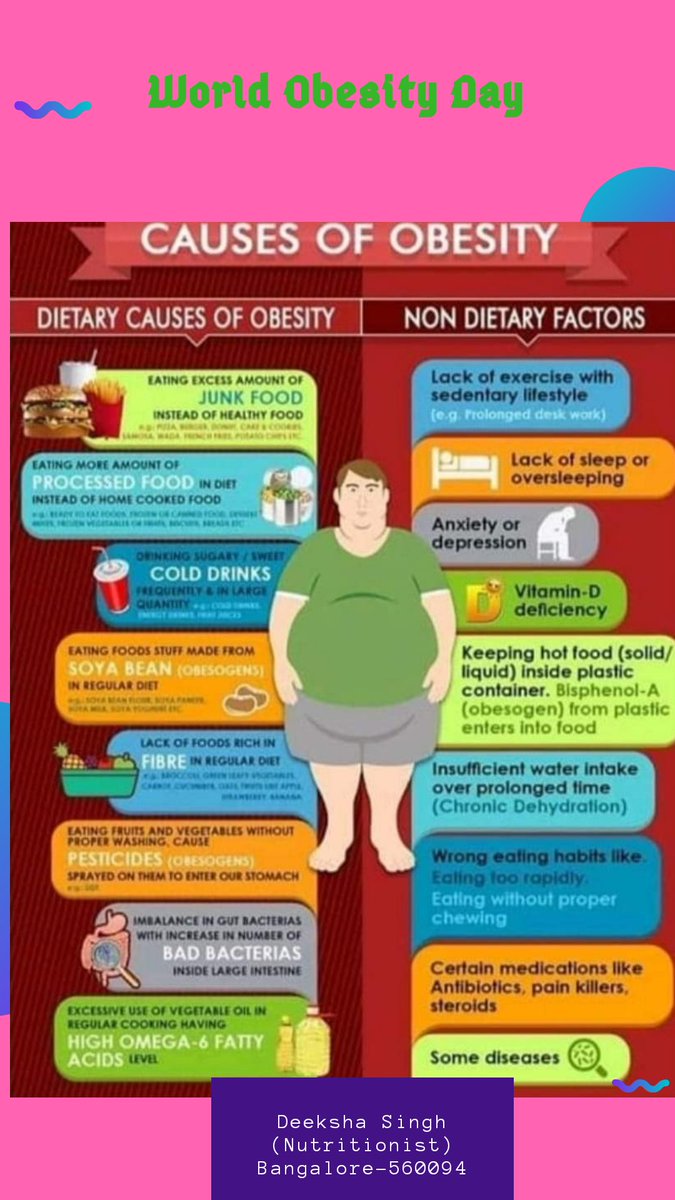 The first warning signs may already be present at discharge from the maternity hospital. Difficult childbirth may be the reason. If the baby was born weakened, he may be reluctant to suckle the breast, very tired from sucking it. In the maternity hospital, they sometimes solve this problem by feeding the baby with milk formulas instead of teaching an inexperienced mother the skills of breastfeeding.
The first warning signs may already be present at discharge from the maternity hospital. Difficult childbirth may be the reason. If the baby was born weakened, he may be reluctant to suckle the breast, very tired from sucking it. In the maternity hospital, they sometimes solve this problem by feeding the baby with milk formulas instead of teaching an inexperienced mother the skills of breastfeeding.
To avoid such troubles, parents need to make sure that the child gets enough fluids with food and drink.The amount of liquid that the baby should consume per day depends on its age and weight. The daily allowance for crumbs up to a year is 100 ml of liquid for each kilogram of weight. This includes not only water, but also breast milk, and the liquid that is contained in porridge, mashed potatoes, etc. Please note that an increase in temperature outside or in an apartment by 1 ° C in excess of 20-22 ° C, which is comfortable for a baby, requires the use of an additional 100 ml of liquid.
For this reason, pediatricians recommend offering water to all children, without exception, in addition to the main food from the first day of life.If the baby refuses, it is not necessary to force him, and if he agrees, he should not be limited: he himself knows his norm.
Signs of dehydration in a child: help
The metabolic rate of young children is much higher than that of adults, and even molecular water in a baby’s body does not stay longer than five days. This is due to the peculiarities of the child’s body, adapted to receive nutrition in the form of a liquid. The older the child, the slower the water molecules leave his body, so dehydration is especially dangerous for babies.Water loss can occur for a variety of reasons, but the main signs of dehydration in a child of any age are always the same.
Causes of fluid loss in children
Fluid is lost from the body of babies for reasons, some of which can be both diseases and unfavorable external conditions.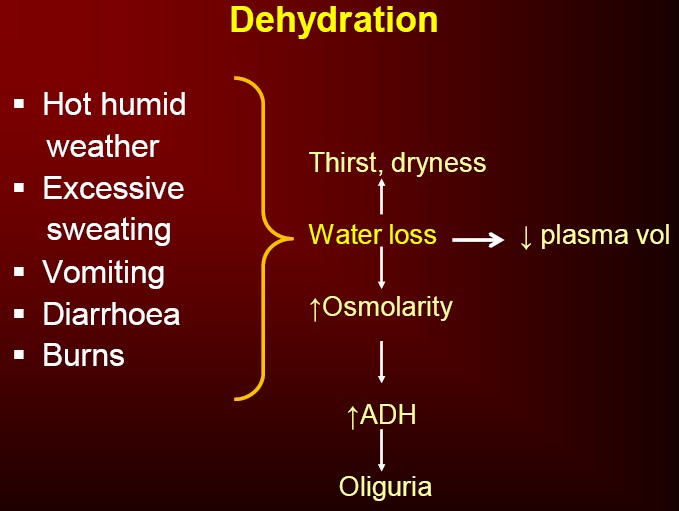 And if the baby is not used to drinking enough water, he may become dehydrated. The most common causes of dehydration in a child are:
And if the baby is not used to drinking enough water, he may become dehydrated. The most common causes of dehydration in a child are:
- Hot weather in which children sweat a lot and lose moisture.
- Insufficient intake of water in the body in the form of drink or liquid food. Even babies who eat milk should be given boiled water several times a day, especially in summer.
- Metabolic disorders in which the body loses water, such as diabetes.
- Acute intestinal infections, poisoning, accompanied by diarrhea and vomiting. Indigestion is always accompanied by loss of fluid and minerals.
- Taking medications that accelerate the elimination of fluid, such as diuretics.
Symptoms of dehydration
In medicine, it is customary to subdivide the signs of dehydration of the human body into three subgroups, corresponding to the degree of dehydration. The first degree is the easiest; to compensate for this condition, no special measures are required, except for replenishing the water balance by giving water. The second degree is characterized by a deterioration in the child’s condition, develops within a day and requires immediate measures to restore the water balance. The third, most severe degree develops as a result of severe intoxication, leading to the emergence of a real danger of shock and coma.The child needs emergency hospitalization.
Dehydration stage 1:
- rare urination;
- dark, concentrated urine;
90,025 thirst;
90 025 dry and chapped lips;
90,025 slight weight loss;
90,025 baby anxiety;
90,025 dry lips and tongue;
90,025 urinating every six to eight hours.
Dehydration stage 2:
- drowsiness, apathy, unwillingness to play;
- pallor of the skin, grayish tint;
- dark circles around the eyes;
- rapid pulse, tachycardia;
- retraction of the fontanelle in newborns.

Dehydration stage 3:
- refusal of food and water;
- confusion, disorientation;
- heart palpitations;
- reduction of skin elasticity;
- loss of more than ten percent of weight.
90,025 cold fingers and toes;
90,025 limb edema;
90,025 sunken eyes;
First aid
If adults have noticed the first signs of dehydration in a child, then it is necessary to quickly take measures so that the baby’s condition returns to normal.To do this, you need to determine what is causing the dehydration and eliminate the root cause. For example, on a hot afternoon, children are wiped off with a damp towel, they are given cool water to drink, and they are laid in the shade. If possible, the baby should be bathed under running warm water.
If the cause of dehydration is diarrhea or vomiting with an intestinal infection, then an urgent need to see a doctor. Before the normalization of the intestines and stomach, children are given electrolyte solutions intended for babies. “Regidron”, “Pedialyte”, ordinary water with a drop of lemon and a pinch of salt are offered in limited quantities.The stomach of babies with indigestion cannot keep the same volume of fluid, so the solutions are given one spoonful, warm, after ten to twenty minutes. Alternatively, you can use warm water microclysters: water is quickly absorbed in the rectum.
Viral or bacterial diseases can cause intoxication and the associated reluctance to drink and eat. You do not need to insist, force-feed the child, but water should be given in a spoon, even if the baby does not want to drink it.The introduction of liquid helps to alleviate the symptoms of intoxication and prevent the increase in symptoms of dehydration.
Treatment of dehydration
In case of unsuccessful attempts to help the baby on their own, the parents must definitely go to the hospital, where the child will receive emergency care.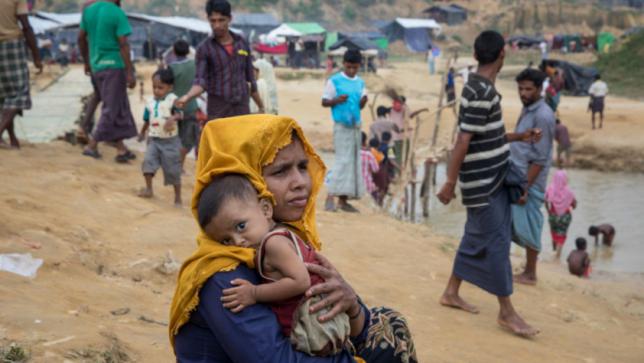 Most often, the pediatrician prescribes a course of intravenous infusions of saline and glucose, which will compensate for the deficiency of water and minerals. In addition, the main cause of dehydration is treated in the hospital.
Most often, the pediatrician prescribes a course of intravenous infusions of saline and glucose, which will compensate for the deficiency of water and minerals. In addition, the main cause of dehydration is treated in the hospital.
Complications
One of the terrible, irreparable complications of childhood dehydration is death. Strange, but it is dehydration that is the world’s first cause of infant mortality. In addition, fluid loss can cause dysfunctions of the heart and kidneys, nervous system and respiratory tract. With timely treatment, these phenomena are reversible, but if the uncompensated stage of dehydration lasts long enough, then the child may experience changes in the nervous system.
Preventive measures
All adults should know the basic methods of preventing fluid loss in children:
- During the hot season, babies are periodically offered any cool drink, as children simply forget to drink when they play.
- With any rise in temperature, especially if the baby is given medication, it should be given water frequently. The body spends a certain amount of water on the absorption of drugs, therefore, to prevent fluid loss, children are given a lot to drink.
- Do not give too sweet or salty foods and drinks to children with fever or heat. Salt and sugar absorb fluid, causing dehydration.
- Diarrhea or vomiting are conditions potentially dangerous to children, especially dangerous to newborns. A baby can lose a significant amount of fluid in a few hours. An immediate appeal to a pediatrician is the first step of the parents in this case.
90,000 The child drinks little and urinates little: causes of dehydration in the baby
The benefits of water have been written and rewritten.But it is one thing to convince an adult to drink and quite another to convince a child.
 Many children do not like water. Serve them sweet drinks.
Many children do not like water. Serve them sweet drinks.
If you have any questions, you can ask them using the Doctis service.
The body of a small child is 75-80% water. Adults are “watered” less: a woman’s body contains 50-60% of water, men – 70-80%. However, despite the fact that the child’s body is “watery”, it loses moisture faster, since the center of the brain, which regulates water-salt metabolism, has not yet matured in children.How to recognize signs of dehydration in a child? What are the causes of dehydration in children? And why dehydration in a child under one year old can have dangerous consequences?
How much water does a child need
1. Adults need 2 liters of fluid a day. And what is the norm for children?
It depends on the age. If the baby is fully breastfed, then up to six months he does not need water. If on a mixture with osmolality (from the editorial board – this term is used to denote the saturation of the solution with proteins and salts), close to breast milk – too.After six months, complementary foods are introduced. And the water too. But – for informational purposes only. Let the baby drink as much as he wants.
From the age of one, the child should consume approximately 1200 milliliters of fluid per day. This is not only water, but also soup, tea, vegetables, fruits (they also have a lot of moisture). After four years – 1200-1500 milliliters. After seven – 1500-2000 milliliters.
You also need to focus on the child’s activity. If he is constantly on the move, playing sports, more fluid may be required.If sedentary, the amount of moisture consumed may be less.
2. The child (he is 1.5 years old) drinks little water. But he loves sweet juices and compotes. How to accustom him to water?
Juices – neither purchased nor freshly squeezed – are not recommended for children under 3 years of age: they contain too much sugar (approximately 120-150 g per 1 liter).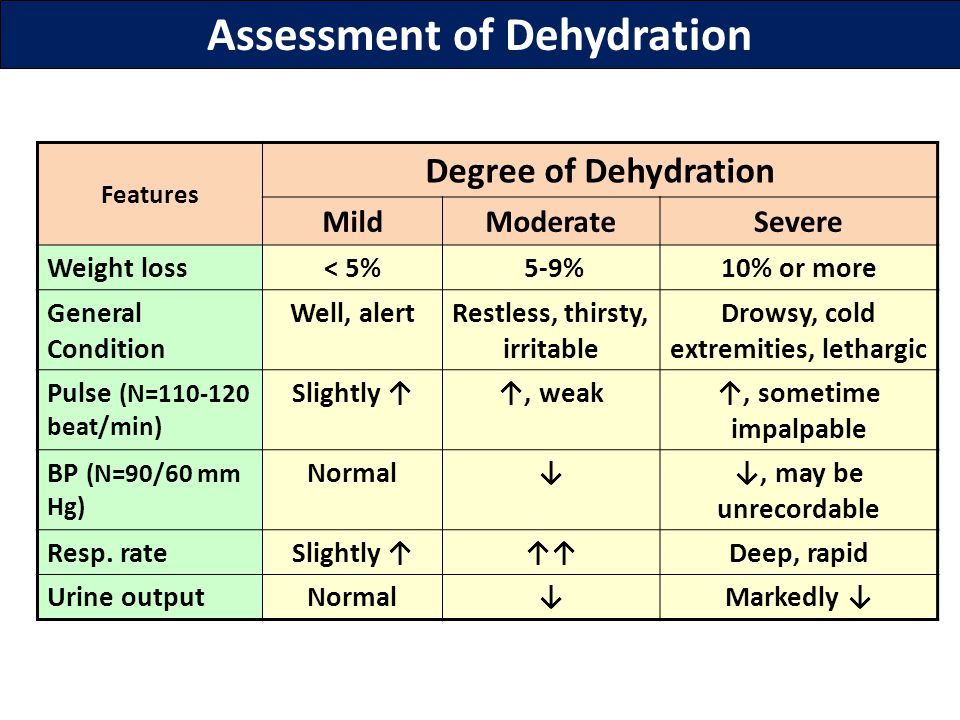 Juice consumption can trigger the development of obesity. Compotes can be given, but without sugar. Or dilute them with water so that they are not too sweet.In addition, the baby can be given fruit drinks, rosehip infusion, chamomile tea (if there is no allergy), kefir … You also need to get used to ordinary water. If a child drinks little water, it is necessary to somehow interest him – give him to drink from a spoon, from a straw, drink water with him in a race…. That is, to make this process fun, like a game. But it is not worth pouring in water by force. Otherwise, the baby will become even more stubborn.
Juice consumption can trigger the development of obesity. Compotes can be given, but without sugar. Or dilute them with water so that they are not too sweet.In addition, the baby can be given fruit drinks, rosehip infusion, chamomile tea (if there is no allergy), kefir … You also need to get used to ordinary water. If a child drinks little water, it is necessary to somehow interest him – give him to drink from a spoon, from a straw, drink water with him in a race…. That is, to make this process fun, like a game. But it is not worth pouring in water by force. Otherwise, the baby will become even more stubborn.
Signs and causes of dehydration in a child
3. What are the signs of dehydration in a baby?
First, about the signs of normal body moisture: the child regularly goes to the toilet “in a small way (the amount of urine is not scanty, the urine is transparent).He has moist skin, moist mucous membranes, no tendency to constipation.
Signs of dehydration in a child include: drowsiness, lethargy, thirst, dry mucous membranes (little saliva, lips and tongue dry), long intervals between urination and a small amount of urine.
Babies who are breastfed may be more likely to breastfeed. Parents are perplexed – have recently eaten, should be full! But the baby may demand breast not because he is hungry, but because he is thirsty.
4. What are the most common causes of dehydration in children?
Vomiting, especially repeated vomiting, as well as diarrhea. As a rule, this occurs against the background of an intestinal infection. With vomiting and frequent, loose stools, the child loses a large amount of water, and with it – mineral salts, which leads to significant violations of water-mineral metabolism.
Another cause of dehydration in children is increased body temperature, for example, during ARVI. Intensive evaporation of moisture occurs. That is why you need to give children more fluids during illness.
That is why you need to give children more fluids during illness.
Heatstroke is another possible cause of dehydration. It can happen not only in summer, but also in winter, if it is very hot in the room, and a hundred clothes are on the baby. In such a situation, the child will inevitably sweat. As a result, it loses moisture.
5. How to prevent dehydration?
Giving to drink. Do not try to pour a whole glass into the child – this can provoke vomiting.Parents need frequent, painstaking infusion of fluid: one spoonful every 3-4 minutes. Moreover, it is necessary to solder it not only with plain water, but also with rehydration agents.
Interestingly, the Americans have their own antiemetic prescription. For children over three years old, suffering from intestinal infections, doctors in America can advise to drink … cola. It is believed to suppress the gag reflex. But, of course, you should not take this recommendation too literally, because the parents’ task is not so much to suppress the gag reflex, but to restore the loss of moisture and water-salt balance.Cola is suitable only for mild dehydration, with mild gastroenteritis.
If you see signs of dehydration in an infant, breastfeed often. And in no case wrap up the crumbs. If he has a high fever, it is better to take off his clothes altogether (even a diaper) – this will reduce the fever.
You can always ask the pediatrician about your health in the Doctis mobile application. The first consultation is free! Download it now!
Read also
How to eat for a first grader.5 questions to the gastroenterologist
Rotavirus in a child. Symptoms treatment in Novosibirsk
Rotavirus in children: symptoms, treatment, prevention.
Rotavirus infection is an acute infectious disease with the fecal-oral route of transmission, characterized by lesions of the gastrointestinal tract like gastroenteritis with the development of dehydration syndrome (dehydration).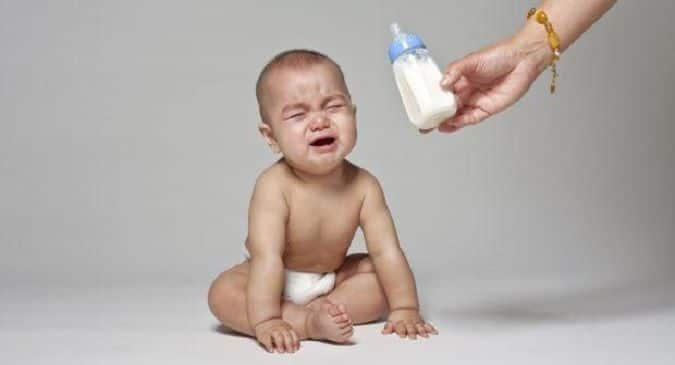
Rotavirus is the leading cause of gastroenteritis in children under 5 years of age.In Russia, it is most often recorded in the winter-spring period.
Causes of infection:
The causative agent is rotavirus, belongs to the family
RNA viruses. 1 – 4, 8 and 9 types of the virus are considered infectious for humans.
The source of infection is a person (sick or virus-releasing agent). The number of asymptomatic carriers of the virus among children can reach 5-7%.The virus is able to maintain viability in the external environment for several months, is stable at low temperatures, and quickly dies when heated.
In general, in the Russian Federation, the proportion of sick children under 1 year old is 20.6%, at the age of 1-2 years – 44.7%. By the age of 2, almost every child has a rotavirus infection at least 1 time and more than 2/3 get sick again. Given the high contagiousness (infectiousness), it is a common cause of outbreaks in organized groups (kindergarten, school) and hospitals.
Transmission mechanism of rotavirus – fecal-oral: it is realized by food, water and contact-household routes. Given the extremely high contagiousness of rotavirus and the resistance of the pathogen to household chemicals, even very strict hygiene measures (including washing hands after each contact with a patient) can often be ineffective. The incubation period is only a few days – an average of 1 to 3 days.
Clinical picture
The main symptoms of rotavirus gastroenteritis are general intoxication (fever, lethargy, vomiting, headache) and changes in the gastrointestinal tract: abdominal pain, frequent loose watery stools. Rotavirus gastroenteritis is characterized by two variants of the onset of the disease: acute (about 90% of patients), when all the main symptoms appear on the 1st day of the disease, and subacute, when 1-2 symptoms (more often abdominal pain and intoxication) occur on days 2-3 diseases are joined by diarrhea, vomiting, fever.
General infectious syndrome.
Most cases of rotavirus infection begin acutely with an increase in temperature to febrile numbers (38.0 degrees) or even hyperthermia, but the duration of fever, despite its severity, rarely exceeds 2-4 days. Fever is accompanied by symptoms of intoxication: weakness, lethargy, decreased appetite up to the development of anorexia and adynamia in severe forms of the disease. In older children with mild forms, the disease can occur against the background of subfebrile temperature with moderately severe symptoms of intoxication or their absence.
Syndrome of local changes (gastritis, gastroenteritis and / or enteritis). One of the first and often leading manifestations of rotavirus infection is vomiting. It can occur simultaneously with diarrhea or precede it, be repeated or repeated over the course of 1-2 days. The defeat of the gastrointestinal tract proceeds as gastroenteritis or (less often) enteritis. Diarrheal syndrome in rotavirus infection is one of the most important and persistent manifestations, in some cases determining the clinical picture of the disease.The stool is profuse, watery, frothy, yellow, without visible pathological impurities, or with a small amount of transparent mucus, sometimes there is a characteristic sour smell of stool. Stool frequency on average does not exceed 4–5 times a day, but in young children it can reach 15–20 times. The duration of diarrhea on average ranges from 3 to 7 days, but it can persist for a longer time (up to 10-14 days, more often in young children). Rotavirus infection is characterized by a combination of diarrhea with symptoms of flatulence, which are most pronounced in children of the first year of life.Abdominal pain syndrome with rotavirus infection appears at the onset of the disease. Abdominal pains of varying severity may be diffuse or localized in the upper abdomen, and episodes of cramping pains may also occur.
Dehydration Syndrome. The severity of the course of rotavirus gastroenteritis is determined by the volume of pathological fluid loss with vomiting and diarrhea and the development of exicosis (dehydration) I – II, less often II – III degrees.The degree of exicosis in patients depends not only on the severity of pathological fluid and electrolyte losses, but also on the adequacy of the rehydration therapy (adequate fluid replacement). The following signs signal the development of dehydration: constant thirst, retraction of the eyes and large fontanel, dry skin, sclera and mucous membranes. The skin acquires an earthy gray tint, the lips become bright and dry, reduces skin turgor, and decreases the amount of urine. The most dangerous condition is the stage of dehydration, in which thirst is replaced by a complete refusal to drink and there is a pronounced decrease in urination up to its complete absence.
Syndrome of catarrhal changes. In 60–70% of patients with rotavirus infection, catarrhal symptoms of the upper respiratory tract occur, which may precede intestinal dysfunction. It is characterized by moderate hyperemia and granularity of the posterior pharyngeal wall, soft palate and palatine arches, nasal congestion, and coughing. However, the presence of catarrhal phenomena in some cases may be due to concomitant respiratory viral infection, especially during the period of seasonal rise in incidence.
Extraintestinal complications:
– dehydration
– secondary infection
– the development of seizures is possible
– improper water regime RVGE can cause cerebral edema, disseminated intravascular coagulation, acute renal failure and other life-threatening conditions
Most disturbing signs! (It is necessary to call SMP )
– pronounced weakness and lethargy, almost constant sleep or, on the contrary, incessant anxiety
– incessant vomiting
– the inability to water the child
– no urination or very rare concentrated urine
– in children under one year old – retraction of the fontanel
– admixture of blood in the stool
Disease prognosis:
The prognosis of the disease with adequate hydration is usually favorable, the duration of the disease rarely exceeds 5-7 days.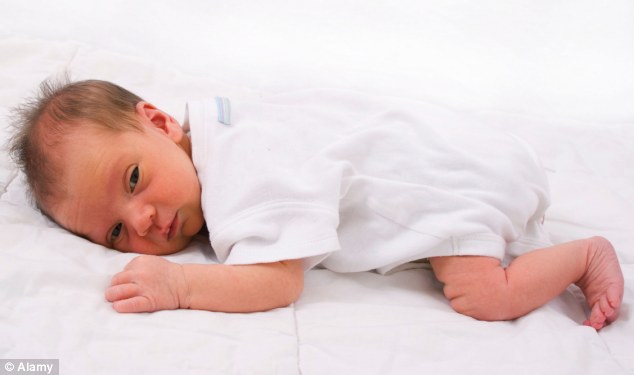 After suffering rotavirus gastroenteritis, a child may become infected again due to a seasonal change in circulating serotypes of rotavirus, but a natural infection transferred may reduce the severity of subsequent infections.
After suffering rotavirus gastroenteritis, a child may become infected again due to a seasonal change in circulating serotypes of rotavirus, but a natural infection transferred may reduce the severity of subsequent infections.
Diagnostics:
Feces ELISA and OKI test (also includes PCR testing for other types of viruses that cause acute intestinal infections, salmonellosis and dysentery)
First Aid:
– Abundant fractional drink.For this, it is preferable to use specialized salt solutions – Regidron, Regidron – Bio. In the first hours, in order not to provoke vomiting, you can give 1 tsp. or tbsp. every 5 to 10 minutes.
IMPORTANT TO REMEMBER! For a day, depending on age, the child must drink at least 1 – 1.5 liters of water. Therefore, especially in the first knocks of the child, you SHOULD continue to drink in a dream, controlling that the child does not choke.
– Put a small child on its side so that in case of an attack of vomiting, he does not choke on vomit.
Antipyretic drugs – only if the temperature is above 38.5.
– Do not feed for the first 3 hours after vomiting, then in small portions.
Be sure to continue breastfeeding!
– In the acute period, for the accelerated normalization of the stool and the removal of the virus from the body, astringent and adsorbing substances are used (carbolene, polyphepan, smecta, enterosgel, etc.)
Diet:
In the treatment of intestinal infections that provoke the development of fermentopathy, special attention is paid to diet.Since during the development of the pathological process, the activity of a number of digestive enzymes, in particular lactase, is disrupted, in the acute period of the disease, whole milk and dairy products should be excluded from the child’s diet and the intake of food rich in carbohydrates (sweet fruits, fruit juices, baked goods, legumes) should be limited. culture). Also, in the acute period of the disease, it is not allowed to feed children with meat, broths, meat products, fatty and fried foods. Food is often given to a sick child, in small portions.The list of permitted foods includes slimy cereals, vegetable purees and soups, white crackers and baked apples.
culture). Also, in the acute period of the disease, it is not allowed to feed children with meat, broths, meat products, fatty and fried foods. Food is often given to a sick child, in small portions.The list of permitted foods includes slimy cereals, vegetable purees and soups, white crackers and baked apples.
Breastfeeding in the presence of an intestinal infection does not stop, since breast milk contains antibodies that neutralize rotavirus and immunoglobulins, which facilitate the course of the disease.
Common errors:
– Giving an antibiotic.In this case, the culprit is the virus and any antibiotic is completely powerless against it. It will not do any good, but only increase the likelihood of complications.
– with profuse diarrhea, the use of any antidiarrheal drugs like loperamide (without consulting a doctor). Taking them can increase intoxication, lengthen the recovery period.
Prevention:
There is a specific prophylaxis against rotavirus – vaccination
Vaccination (Rotatek).The course consists of three doses at intervals of 4 to 10 weeks. The first vaccine is given at the age of 6 to 12 weeks. Last introduction before 32 weeks of age. (Compatible with any vaccines from the national calendar except BCG)
In addition:
Isolation of patients at home with mild forms of rotavirus infection is carried out for 7 days, after which the patient can be admitted to an organized team (including children) on the basis of a doctor’s certificate of recovery without additional virological examination.
• Use only boiled water for drinking;
• Thorough hand washing before eating;
• Pre-washing fruits and vegetables with a brush;
• Sufficient heat treatment of food.
Memo to parents: drinking water for intestinal infection
First-class specialists of infectious diseases departments of the children’s hospital №9 named afterGNSperanskogo specially for moms and dads developed a methodological manual for the timely disposal of intestinal infection before contacting a specialist. If you and your child find yourself at a dacha, on a hike, on vacation abroad or where it is not immediately possible to get an appointment with a doctor, doctors will tell you how to act so that the baby or teenager recovers as soon as possible.
If you and your child find yourself at a dacha, on a hike, on vacation abroad or where it is not immediately possible to get an appointment with a doctor, doctors will tell you how to act so that the baby or teenager recovers as soon as possible.
Prevent dehydration!
With frequent vomiting, fever and loose stools, and you need to immediately begin fractional drinking.It is better to use salt solutions, dry powders for preparation, which are sold in pharmacies. Saline solutions, such as Rehydron, must be alternated with boiled water. If the child is capricious, then you can also offer the child weak tea, mineral water without gas in reasonable quantities (refrain from sulfate or magnesium, so as not to increase loose stools).
How to drink properly? Even a few large sips from a glass can provoke vomiting. The only way to make up for the water deficit is to give the liquid in very small portions.For a baby – one teaspoon for a teenager – one tablespoon of water or saline, alternating between them. Interestingly, if you replace the glass with a spoon, vomiting stops in most cases. Infants can be fed using a 2-5 ml syringe, of course without a needle. Small portions of water or solution must be poured into the child every five minutes – at least, otherwise the child will not be able to drink the required volume, but not more often, otherwise the liquid will not have time to be absorbed and the child will vomit.
What not to do?
Drink juices, fruit drinks and dairy products for the child.Focus on his thirst. If a toddler or teenager does not want to drink, he still needs to drink fractionally and often. If he asks for more fluids, do not give – a large volume will cause vomiting.
When to sound the alarm?
If a child becomes lethargic and wants to doze all the time. Do not think that he is tired – this is an alarming sign of increasing dehydration. Never interrupt drinking to give your child some rest. Shake and continue to drink until the child becomes alert again.If lethargy and drowsiness persist, other signs of dehydration have appeared – dry lips and tongue, long absence of urination, incessant vomiting, “sunken” fontanelle in an infant, then in this case drip intravenous administration of fluid in stationary conditions is already necessary.
Shake and continue to drink until the child becomes alert again.If lethargy and drowsiness persist, other signs of dehydration have appeared – dry lips and tongue, long absence of urination, incessant vomiting, “sunken” fontanelle in an infant, then in this case drip intravenous administration of fluid in stationary conditions is already necessary.
It is necessary to pay attention to the volume and frequency of urination, the nature of the stool. If the child does not urinate for more than 6-8 hours, a doctor’s examination is necessary, since with some acute intestinal infections, kidney damage is possible.When blood appears in the stool, inpatient treatment is indicated.
Remember that the main prevention of intestinal infections is personal hygiene, proper preparation and storage of food!
Dehydration in a child: causes and treatment
Photo Legion-Media.ru
Most parents know that at temperatures above 38, the child should be given an antipyretic agent, and in case of vomiting and diarrhea – enterosorbent. However, not everyone thinks that, in most cases, in addition to the unpleasant symptoms accompanying acute respiratory viral infections or intestinal infection, the child suffers from dehydration – a very formidable condition for the child’s health.
What is dehydration?
Dehydration, or, in medical terms, dehydration, is a sudden loss of fluid in the body, which occurs as a result of its significant loss or insufficient intake. The body of a baby under one year old consists of almost 80% liquid, and a child over 10 years old – 65%, so the loss of even a small amount of it can cause serious health problems and even pose a threat to life.
When does dehydration occur?
The main cause of rapid dehydration is vomiting and / or diarrhea, which usually accompany intestinal infections, rotavirus, exacerbation of diseases of the gastrointestinal tract. In children, dehydration occurs rapidly – the younger the child, the sooner a life-threatening condition can develop. That is why with the listed diseases, the first thing to do is always call a doctor, while simultaneously starting to solder the baby with water. Fluid loss is also observed with an increase in body temperature, even with a banal ARVI.
In children, dehydration occurs rapidly – the younger the child, the sooner a life-threatening condition can develop. That is why with the listed diseases, the first thing to do is always call a doctor, while simultaneously starting to solder the baby with water. Fluid loss is also observed with an increase in body temperature, even with a banal ARVI.
In summer, dehydration can result from overheating, sunstroke or heatstroke.
How is dehydration manifested?
Dehydration in children, as already mentioned, develops very quickly, but it goes through three successive stages.
1st degree of dehydration. The first degree is called “compensated” and develops when the loss of fluid is not more than 5% of the child’s weight. Typical signs include dryness of the mucous membranes, constant thirst, vomiting and / or diarrhea several times a day.
2nd degree of dehydration. In the second degree, we are already talking about the subcompensated form, when fluid loss is from 5 to 10% of the child’s weight. There is an increased moodiness, anxiety and irritability of the child.The mucous membranes become dry, and the skin flabby, in infants, a retraction of the large fontanel is noted. Mom pays attention to sunken eyes, from which tears may not come out even when crying. During the examination, the doctor notes an increase in heart rate and a decrease in blood pressure.
3rd degree of dehydration. In such a situation, we are already talking about the decompensated form, which occurs in children who have lost more than 10% of their body weight with vomiting or diarrhea. In addition to dryness of the mucous membrane and flabbiness of the skin, attention is drawn to the cyanosis of the nose, lips, fingertips, as well as the pallor of the whole body.There is a marked increase in heart rate, lack of urination, shortness of breath, convulsions often occur.
Why is dehydration dangerous?
Dehydration is dangerous for the whole body in general, and for each organ in particular. Loss of fluid disrupts the functioning of the main systems – the kidneys, brain and heart, which can lead to seizures, heart rhythm disturbances, loss of consciousness and other life-threatening conditions.
Loss of fluid disrupts the functioning of the main systems – the kidneys, brain and heart, which can lead to seizures, heart rhythm disturbances, loss of consciousness and other life-threatening conditions.
How can I help my child with dehydration?
When lying with rotavirus in the hospital, the water-salt balance was restored as follows: 2 ml of smecta, 2 ml of rehydron every 3 minutes.This is necessary to avoid dehydration.
As mentioned above, in any situation accompanied by loss of fluid, it is necessary to immediately call a doctor who will assess the child’s condition and select therapy for treating the underlying disease, and also draw up a rehydration regimen, that is, replenish the volume of lost fluid.
There are two main options for help in this case – soldering the child and intravenous fluid administration.
Soldering a child is possible with a slight degree of dehydration.For this, different types of liquid are used:
• water – bottled or purified with a filter and boiled;
• rice water – useful for vomiting and diarrhea, in addition to replenishing fluid, has a calming effect on the gastric mucosa, and also acts as an enterosorbent by binding toxins;
• unsweetened dried fruit compote;
• As directed by your doctor, you can use special water-salt solutions, such as rehydron, to return not only lost fluid, but also salts to the body.
If it is not possible to quickly purchase the drug, the rehydration solution can be prepared at home. This will require 1 liter of boiled water, 20 g of sugar, 3.5 g of table salt and 2.5 g of baking soda. To make up for the loss of potassium, a third of the resulting solution can be replaced with a decoction of raisins. To prepare it, you need to thoroughly rinse 100-150 g of light raisins, pour it with a liter of water and boil over low heat for 20 minutes. Then strain and cool the broth to room temperature, then mix with the first solution.
As for the ratio of saline solution to plain water, with which we solder the child, then with pronounced fluid losses, it is 1: 1, that is, half of the liquid is a prepared solution, half is ordinary water or rice water. If vomiting predominates, then the recommended ratio of saline to salt-free solutions is 2: 1, if frequent bowel movements are noted, 1: 2.
Dairy products, juices, sweet compotes, cocoa, soda – not only are not suitable, but also contraindicated in such a situation.The child should be soldered very slowly, literally 1 teaspoon every 3-5 minutes, so as not to provoke another attack of vomiting and even greater loss of fluid.
If it is not possible to cope with the usual soldering, as well as in severe cases, with loss of consciousness, convulsions in a child, rehydration is carried out using intravenous infusions.
Poisoning in a child – causes, symptoms, diagnosis and treatment of a child from food poisoning in Moscow in the children’s clinic “SM-Doctor”
GET
CONSULTATION
Contents:
Description of the disease
Types of poisoning
Symptoms
Causes
Diagnostics
First aid
Treatment
Prevention of poisoning
Poisoning is a digestive disorder that occurs due to ingestion of contaminated products, organic toxins, chemicals, and salts of heavy metals into the body.Doctors are involved in the treatment of the disease: pediatrician, gastroenterologist, infectious disease specialist, toxicologist (depending on the severity of the condition and the cause of the pathological condition).
About the disease
It is customary to include all pathological conditions that develop in response to the ingress of toxins into the body by the oral route (through the mouth) to the group of food poisoning. People of all ages are susceptible to intoxication, including children of the first year of life, younger preschool and school age.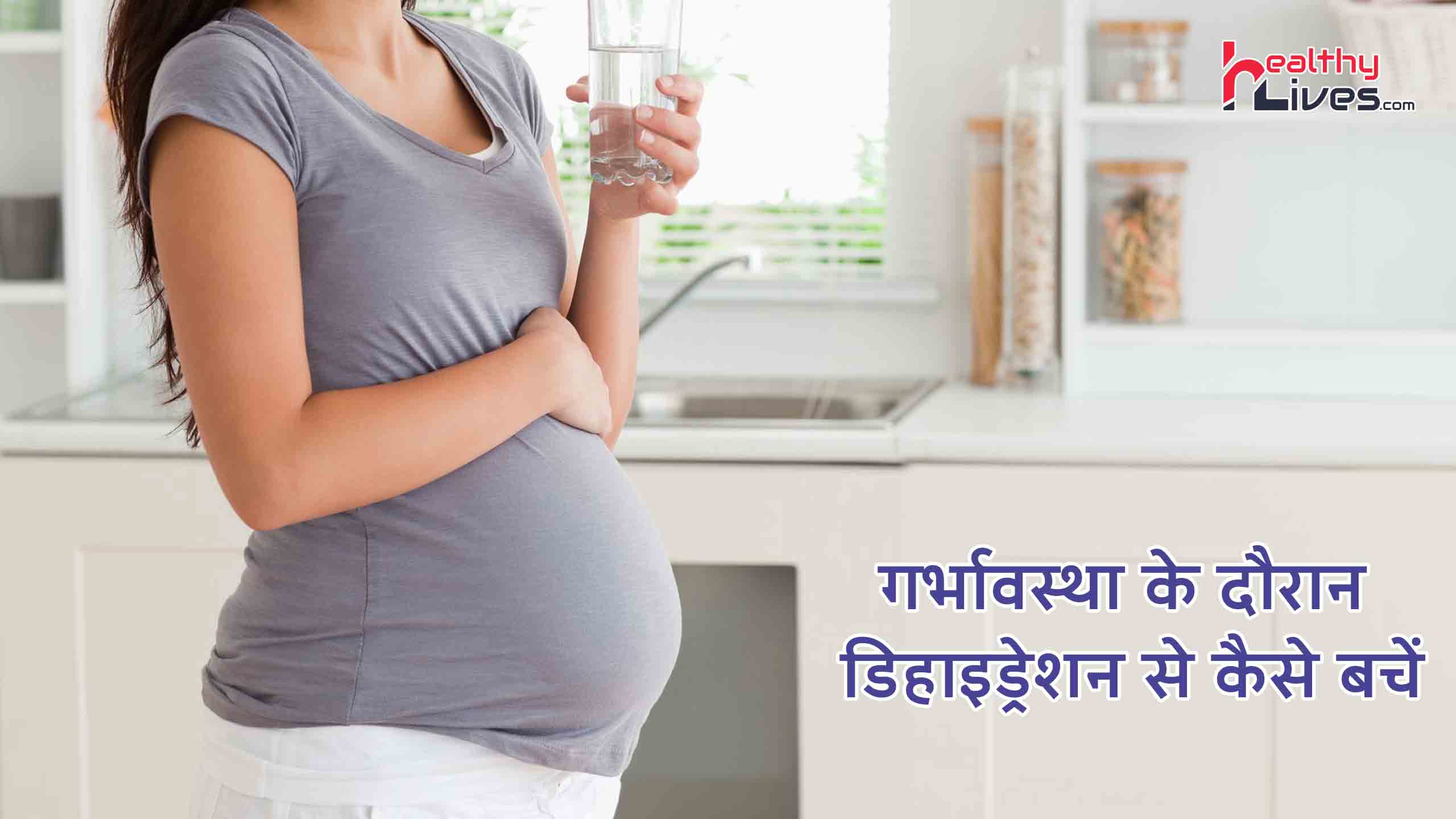 The condition can be dangerously formidable consequences, up to deaths.The severity of complications for a small patient depends on the type and degree of intoxication, the state of immunity, and the quality of care.
The condition can be dangerously formidable consequences, up to deaths.The severity of complications for a small patient depends on the type and degree of intoxication, the state of immunity, and the quality of care.
In case of poisoning, you cannot self-medicate. It is difficult for parents to establish the nature and degree of danger of the disease, to choose the right treatment. This can only be done by a qualified doctor.
Types of poisoning
Depending on the type of toxins, poisoning is divided into the following categories:
- Infectious (toxicoinfections, intestinal infections).They develop when eating foods contaminated with pathogenic bacteria, viruses, fungi, protozoa (Salmonella, Klebsiella, Shigella, Escherichia coli). Poisoning can be caused not by the bacteria themselves, but by their waste products. For example, the causative agent of botulism secretes the strongest poison during reproduction, as well as some strains of staphylococci that can be ingested from the hands.
- Non-infectious. Such intoxication develops when using toxins of organic or inorganic origin.Common examples: poisoning with mushrooms, berries, green potatoes. Some types of fish can cause intoxication if they are not properly cooked. Chemical poisoning occurs after the use of poisons and heavy metals (nitrates, arsenic, etc.). In children, intoxication is often recorded due to the ingestion of household chemicals.
Symptoms of poisoning
The manifestations of poisoning depend on the type and amount of toxins that have entered the body, as well as on the initial level of health.In children, intoxication is much more difficult than in adults. Doctors associate this with a weak barrier function of the liver and filtration function of the kidneys, rapid absorption of toxins through the mucous membranes.
Signs of poisoning may appear 30 minutes after exposure to toxins or several hours later. It all depends on the strength of the poisons. Intoxication begins with an asymptomatic period. The child may experience weakness, general malaise, drowsiness, sweating. Then comes the period of the expanded clinical picture.It is accompanied by:
Intoxication begins with an asymptomatic period. The child may experience weakness, general malaise, drowsiness, sweating. Then comes the period of the expanded clinical picture.It is accompanied by:
- abdominal cramps;
- repeated vomiting;
- temperature rise.
90,025 swelling;
90,025 diarrhea;
When neurotoxic poisons enter the body, disturbances in consciousness and respiration, a decrease or increase in muscle tone, headaches, and indomitable vomiting are observed. Such conditions are life-threatening and require immediate medical attention.
It must be remembered that children lose a lot of water during vomiting and diarrhea.Dehydration develops. At a young age (up to 1 year), the loss of up to 10% of water from body weight is fraught with irreversible consequences. That is why poisoning cannot be treated on its own.
Causes of poisoning
Poisoning in children can develop due to the use of:
- unknown or stale mushrooms;
- preservation with long-term storage;
- low-quality water;
90,025 meat and fish that have undergone low-quality heat treatment;
90,025 seeded dairy products;
90,025 cakes and pastries of dubious quality;
90,025 expired products;
90,025 household chemicals, etc.d.
The carriers of infections can be children themselves or adults who prepare food for them. Infection is possible when using dishes and toys together with sick children or parents.
Diagnostics of poisoning
Doctors “CM-Doctor” have extensive experience in the diagnosis and treatment of various food poisoning. The task of parents is to contact a specialist in time. The reason for going to the clinic is a single vomiting in an infant or three times in older children, disorders of general well-being (headache, convulsions, lack of appetite, hallucinations).
Diagnosis of poisoning begins with a visual examination of the patient and interviews with parents.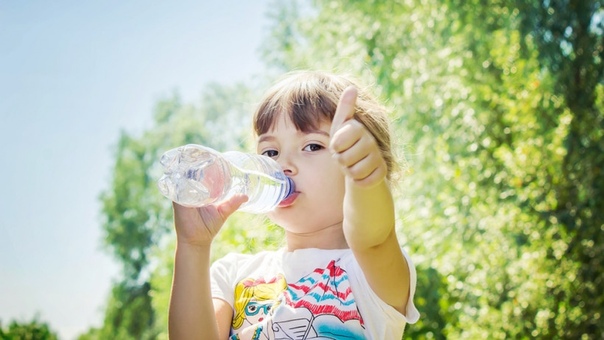 It is important to find out what and when the baby was using, whether he could eat or drink dangerous liquids, whether there are cases of poisoning in the children’s team. Diagnosis is clinical. The doctor selects the optimal treatment. To clarify the diagnosis, blood, feces, and vomit tests are performed. Based on their results, the type of poisoning is established and the treatment is supplemented.
It is important to find out what and when the baby was using, whether he could eat or drink dangerous liquids, whether there are cases of poisoning in the children’s team. Diagnosis is clinical. The doctor selects the optimal treatment. To clarify the diagnosis, blood, feces, and vomit tests are performed. Based on their results, the type of poisoning is established and the treatment is supplemented.
First aid
In case of poisoning in a child, help should be provided immediately.Parents should call an ambulance, but even before the doctors arrive, the first steps should be taken.
- In case of poisoning in children 1-2 years old, stop feeding, give oral rehydration solution in small portions every 5-10 minutes.
- If a child over 2 years old is poisoned, assistance begins with the removal of the toxic product. If the child has not vomited himself, you can give him a glass of clean boiled water at room temperature, and then induce vomiting by pressing on the root of the tongue.Further, the patient needs to be provided with rest, given a sorbent (Enterosgel, Smecta), given solutions for rehydration. An antipyretic can be given at high temperatures.
Upon arrival, the doctor must be informed of the names and quantities of all drugs that the parents gave to the child. Further treatment is prescribed by a specialist.
It is also important to know what not to do:
- force-feed the child;
- rinse the stomach with potassium permanganate;
- to give pain relievers, antiemetic, antidiarrheal agents.
Treatment of poisoning
Children of the first year of life, as well as older patients in moderate and serious condition, are subject to hospitalization. A child is urgently hospitalized with suspected botulism, mushroom poisoning, heavy metals, and chemicals. Antidotes (antidotes) are administered to this category of children.
The list of medicines in the complex therapy depends entirely on the type of intoxication, the age and condition of the little patient.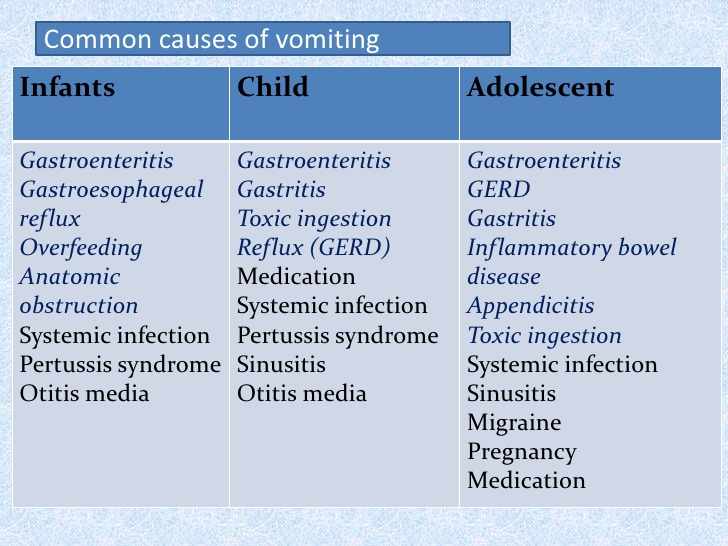 Prescription of sorbents, antibiotics, gastroprotectors, antidiarrheal drugs, probiotics is possible.
Prescription of sorbents, antibiotics, gastroprotectors, antidiarrheal drugs, probiotics is possible.
In case of mild poisoning, outpatient treatment is possible.
Nutrition after poisoning
If the baby is poisoned, breastfeeding is temporarily stopped (until the condition improves), clean water is given. Then the feeding is restored as usual. In case of poisoning of a child on artificial feeding, feeding is stopped for 8-12 hours (in agreement with the doctor), and water is also given.Then they are fed with fermented milk mixtures, rice broth. Complementary feeding is resumed after complete recovery.
For older children, hunger is shown in the acute period. As the condition improves, light food is allowed (broth, jelly, rice broth, slimy cereals, mashed potatoes). The diet is expanded with meat and fish soufflés, boiled vegetables. Raw vegetables, dairy products and bread are the last to be added to the menu.
Prevention of poisoning
In order to prevent poisoning in a child, you should:
- ensure high-quality heat treatment of meat, fish, eggs;
- to exclude the use of expired products;
- choose only high-quality purchased dairy products or cook it yourself;
- refuse to cook food for future use;
- prevent children under 12 years of age from eating mushrooms;
- to exclude the use of unknown fruits and berries;
- keep household chemicals, medicines in inaccessible places;
- to exclude contact with people who have recently had a foodborne infection.
It is important to teach your child to wash their hands often (before eating, after using the toilet), to eat only washed vegetables and fruits. It is important to keep an eye on your baby when swimming in open water. Raw water contains a large number of pathogens of intestinal infections and even one sip can cause poisoning.
Specialists “CM-Doctor” will help to cope with intoxication as soon as possible.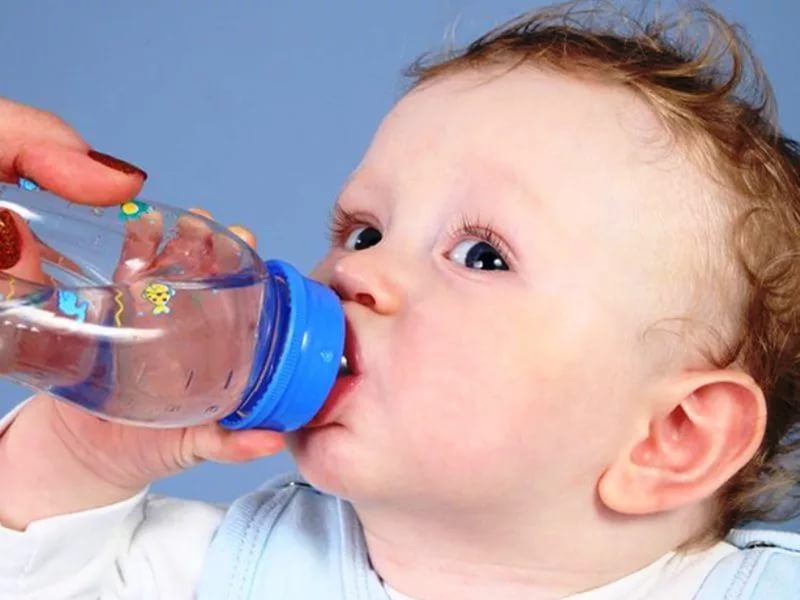

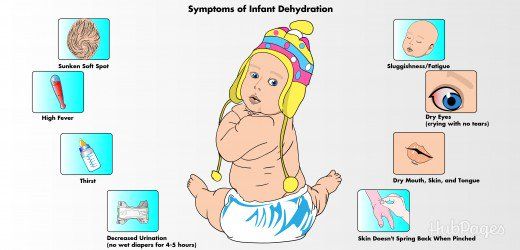
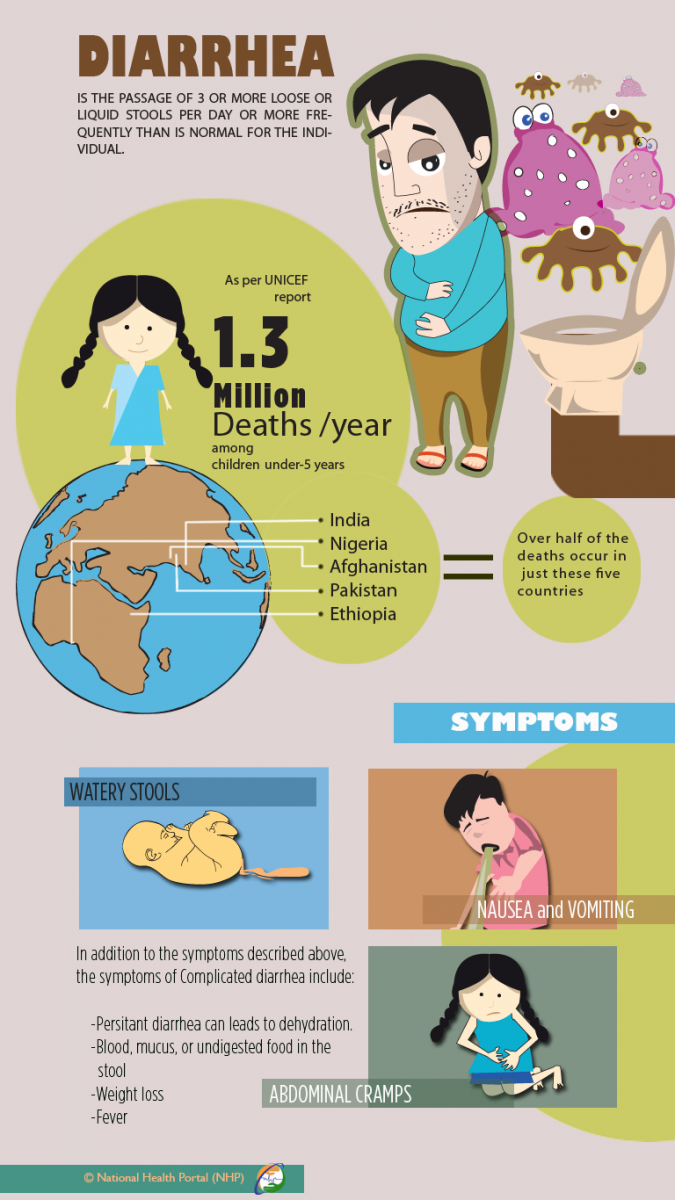 Having uncontrolled or untreated diabetes puts you at high risk of dehydration. Kidney disease also increases your risk, as do medications that increase urination. Even having a cold or sore throat makes you more susceptible to dehydration because you’re less likely to feel like eating or drinking when you’re sick.
Having uncontrolled or untreated diabetes puts you at high risk of dehydration. Kidney disease also increases your risk, as do medications that increase urination. Even having a cold or sore throat makes you more susceptible to dehydration because you’re less likely to feel like eating or drinking when you’re sick.